

The LDES Consortium is a compelling initiative focused on advancing long-duration energy storage (LDES) technologies to enhance grid reliability and support the integration of renewable energy. In this interview, Dr. Alyssa McQuilling, CBI's Research & Innovation Manager, provides insights into the consortium's goals, the roles of its members, and the innovative solutions to push the boundaries of energy storage.
Can you give us a brief overview of the LDES Consortium and its primary goals?
Sure! The LDES Consortium is an exciting initiative that brings together diverse stakeholders to tackle the challenges of long-duration energy storage (LDES). The main aim is to overcome both technological and economic barriers to make LDES more viable and widespread.
What makes this consortium special is that it's 'technology agnostic ', meaning we're not biased towards any specific energy storage technology. We have experts from different energy storage technologies, such as chemical, mechanical, thermal, and all types of batteries, including lead and lithium. The idea is to address every aspect of the industry, from developing the workforce and managing the supply chain to creating policies and advancing technology, regardless of the specific technology used.
What roles do you and Dr. Matt Raiford, CBI's Technical Director, play within the LDES Consortium, and what are the 'tiger teams' you're involved with?
Matt and I are involved in several 'tiger teams' within the consortium. These teams are focused groups that tackle specific challenges related to long duration energy storage. Each team is dedicated to addressing a unique aspect of the LDES landscape.
Between the two of us, we're active in about eight tiger teams, where we attend meetings, provide feedback, and help refine the challenges and recommendations alongside other industry experts.
Uniting experts for energy innovation
How does LDES differ from other types of energy storage, and why is it important?
That's a great question. LDES stands out because it can store energy for more than ten hours, which is crucial for ensuring the grid's reliability. Some technologies are perfect for shorter durations, while others can handle much longer storage times, even up to seasonal storage.
This capability is especially important as we integrate more renewable energy, which can be unpredictable, into the grid. In simple terms, LDES helps balance supply and demand, ensuring enough energy is available when it's needed the most. This makes it a key player in creating a stable and sustainable energy system.
You're leading the Workforce Development team. What does that entail, and why is it crucial for the project?
I'm the industry advisor for the Workforce Development team, which is led by Hope Corsair at Oak Ridge National Lab. Our team's mission is to determine what skills and training are needed to build a strong workforce for the LDES industry. We've examined current workforce needs and are making recommendations to help scale the industry and prepare for future demands.
This builds on my previous work with the NAATBatt Education Subcommittee, where we focused on the educational needs of the battery industry. Ensuring we have a skilled workforce is essential for the success of LDES technologies.

What are some of the big challenges you face in making LDES more common, and how are you addressing them?
One of the biggest challenges we face is the cost. For instance, the current systems are primarily designed for shorter durations, making them less cost-effective for longer storage needs. Another challenge is scaling up the supply chain for these newer technologies, which haven't been widely deployed yet.
To address these, we're working on creating new market structures and incentives for long-duration energy storage. We're also confident that as the industry gains more experience, costs will come down, and these technologies will become more affordable.
Can you share a success story or milestone the LDES Consortium has achieved so far?
Absolutely! One of our early successes has been the release of initial recommendations from our tiger teams. These drafts are currently under review and will help guide the consortium's future activities.
We're also planning our first in-person consortium meeting in September in California, which is expected to bring together up to 300 attendees. It's a great opportunity to build momentum and collaboration.
Building a sustainable energy ecosystem
Sustainability and environmental impact are critical concerns. How do these advanced energy storage solutions help create a greener and more sustainable future?
LDES is crucial for maintaining grid reliability as we increase the use of renewable energy sources. By storing energy for longer periods, LDES helps balance the intermittency of resources like wind and solar. Technologies like lead batteries provide long duration storage and have established recycling processes, supporting a more sustainable energy ecosystem.
What potential do LDES technologies hold for transforming the energy landscape in developed and developing regions?
LDES has the potential to improve how we use renewable energy by making it more reliable and accessible. It can be integrated into large national grids as well as smaller microgrids, which are particularly beneficial in developing regions. This flexibility can support broader electrification and sustainable development goals globally.
Looking ahead, what impact do you think LDES will have on our everyday lives and the global energy landscape?
I believe that LDES will become a seamless part of our power grid, supporting decarbonization and electrification efforts. It will ensure we have reliable power whenever it's needed, helping to make our energy systems more resilient and sustainable.
It will be interesting to see the development of new technologies and the lessons we can learn from existing ones to ensure that the industry's growth is sustainable. This starts from the extraction of raw materials, through manufacturing and the lifetime of the systems, all the way to the end of life and recycling/materials recovery.
This hybrid energy storage (ESS) system made of advanced lead and lithium batteries is currently the largest of its kind in Poland.
Strategically situated to enhance the Bystra Wind Farm in Northern Poland, this facility maximizes renewable energy usage and stabilize local energy supplies.
Through efficient energy time-shifting, the system provides a reliable power source during peak demand periods, lowering energy costs for industries and residents. It focuses on low-carbon technologies and high recycling rates, setting a new standard for energy solutions in the region.
| Location | Gdańsk County, Pomeranian Voivodeship, Poland |
| Project launch | October 2019 |
| Construction time | 12 months |
| Size of the system | advanced lead batteries: 26.9 MWh energy; 5 MW power | lithium batteries: 0.47 MWh energy; 1 MW power; 4.5-hour system |
| Battery type | 2 V advanced lead-carbon AGM batteries** and lithium batteries |
| Battery provider | Showa Denko Materials |
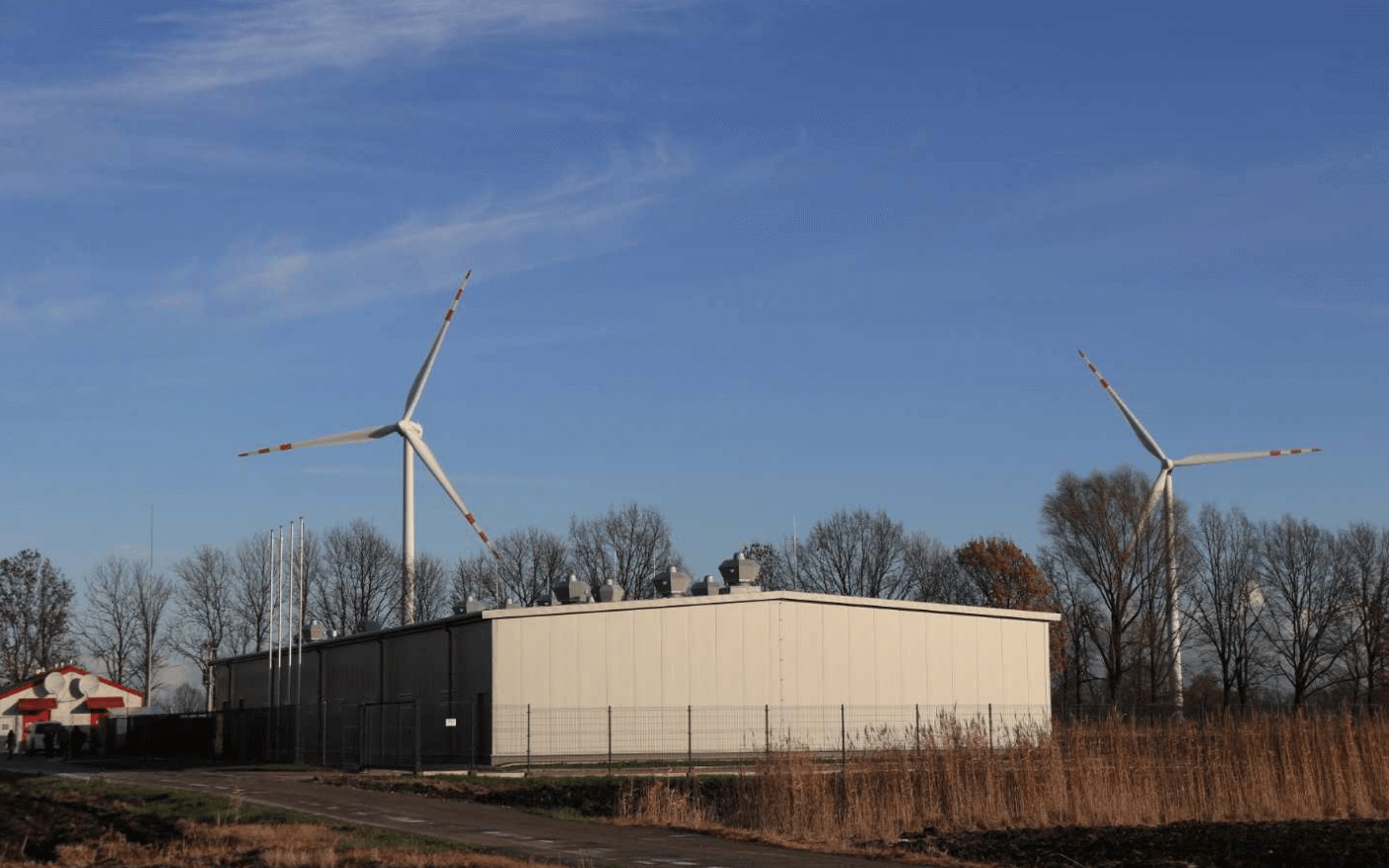
View CBI's Interactive Map of energy storage case studies
Did you know that there is a lead battery in nearly every vehicle on the road today? Lead batteries are crucial for the automotive industry, with 12 V lead batteries being used for SLI (starting, lighting and ignition), start-stop and micro-hybrid applications. According to Avicenne Energy (CBI’s Market Report 2023), the 12 V lead battery market for automotive applications is expected to grow from US$ 16 Bn in 2020 to almost US$ 25 Bn in 2030.

The Consortium for Battery Innovation (CBI) contributes to the growing demand for high-performing lead batteries by funding pre-competitive research as part of our Technical Program, based on research priorities defined on CBI’s Technical Roadmap. For automotive applications, research focus is on the following performance metrics and electrochemical properties:
| Dynamic charge acceptance (DCA): the ability of a battery to accept instantaneous energy during charging | |
| Hydrogen evolution reaction (HER): the side reaction occurring on a negative electrode surface which accelerates water loss | |
| Cold cranking amperage (CCA): the high discharge pulse power responsible for starting a car, rated at -18 °C for 30 seconds | |
| High-temperature durability: the ability of a battery to perform at higher temperatures, measured by standardised overcharge tests typically above 60 °C |
In the project ‘Investigations on the effect of carbon surface functional groups on electrochemical behavior of lead-carbon electrodes’, finalised in March 2023, Fraunhofer Institute for Silicate Research and Wrocław University of Science and Technology have collaborated to investigate the influence of different types of carbon additives on the performance of negative electrodes in advanced lead batteries. The base of this study was the application of chemical modifications to two different amorphous carbons with low and high external surface areas to obtain a range of acidic and basic carbons for testing. Their key finding was that specific surface functional groups of carbon can increase DCA while lowering HER activity and improving CCA.
Completed in September 2023, the project ‘Best practices of cell testing for EFB regarding DCA and high-temperature durability’ brough together four German partners – Technical University of Berlin, Fraunhofer Institute for Silicate Research, Moll Batterien and Ford Aachen – in a collaborative effort to establish improvements to laboratory test methods for 2V lead battery test cells during battery use in automotive applications. They have successfully defined best practices for measuring weight loss and electrolyte decomposition with 2V laboratory cells during standard tests, and for test cell design and sealing to account for the harsh conditions at high temperatures. These results provide guidance for better optimization of active material formulation for automotive batteries.
Lessons learned from previous projects about carbon surface functional groups and laboratory cells are not only relevant to 12 V lead batteries, but also for the growing use of lead batteries in auxiliary mode. Because of the nonstop evolution in automotive technology, auxiliary batteries have been increasingly employed for safety back-up and supply power to specific electronic features, being a significant opportunity for low-voltage lead battery systems.
Helping to build up that knowledge for this significant emerging market, one new project kicked off in 2023 focusing specifically on auxiliary automotive use. The project ‘In Situ Imaging and Phase Analysis of Live Cell Lead Battery Materials for Auxiliary Battery Cycling Regimes’ is investigating processes occurring at microscopic level during representative tests for auxiliary batteries to understand how positive and negative electrodes change during different charge conditions. This study will link laboratory findings to commercial lead battery products, having large potential to improve performance metrics of lead batteries used in auxiliary applications.
If you want to know more about the findings of pre-competitive research projects supported by CBI, the full detailing of results is available for CBI members.
A recent Brussels meeting emphasized the need to address the priority for a long-term strategy for Critical Raw Materials in Europe. Following the Ukrainian-Russian conflict, not only war came back to our continent after the end of WW II, but we also witnessed adverse effects, such as soaring inflation, geopolitical tensions, and surging energy costs, significantly impacting our everyday lives. Alongside, with growing consequences of the climate crisis, there is no other action than to transition towards renewable energy sources to lower carbon dioxide emissions and make energy more efficient. In this scenario, the Critical Raw Material Act (CRM) sets out an ambitious vision for Europe that seems to fall short when it comes to financing its promises.
By Nicola Filizola

As I attended the Eurometaux rally on April 18th, discussing Critical Raw Materials, I couldn't help but ponder the complex challenges confronting the global scene today.
The Ukrainian-Russian conflict and its aftermath had unforeseeable consequences.
Inflation, international tensions, embargoes, and a dramatic increase in energy costs have affected every aspect of our lives. Electricity bills have soared, fuel prices have spiked, and industries are facing unexpected cost increases, occasionally leading to business failures.
As this was not enough, in the face of these economic challenges, we are also obliged to confront a harsh reality we’ve long ignored—the climate crisis and its severe implications for our planet and its inhabitants.

Consider this, annually, air pollution from fossil fuels and biomass burning is responsible for 7 million deaths worldwide, with associated costs nearing $30 trillion. By 2050, the financial impact of global warming could reach $25-30 trillion yearly. Shockingly, 90% of this pollution originates from energy sources, highlighting its grave impact on human health and the environment (Jacobson M., 2024, Clean, Renewable Energy & Storage for a Sustainable Future, Stanford University). Our dependence on fossil fuels not only raises pollution levels and keeps energy efficiency low, but also introduces risks of price volatility and geopolitical instability.
There is no way out, humanity stands at a crossroads: take decisive actions to protect our planet and future generations or passively face increasingly catastrophic events.
However, there is hope in this ugly scenario. The power to shape our future is in our hands. Embracing renewable energies such as wind, water, and solar is pivotal to electrifying our homes, industries, and transportation systems. But this shift demands innovation, investment, and political will.
If we are to do that decisively, Europe's green transition is expected to boost the demand for critical raw materials. European companies largely depend on imports for these minerals, with a significant amount coming from China. Therefore, this concentration in supply chains places Europe's climate and green industrial policies at considerable geopolitical risk.
The CRM, a new regulation of the European Commission, is part of the broader Green Industrial Plan and is aligned with the Net-Zero Industry Act (NZIA). It emerges as a vital element in this transition, ensuring the responsible extraction and processing of materials crucial for renewable technologies.
The Act, for instance, aims to diversify supply chains. It has set benchmarks for domestic capacities by 2030: at least 10% of raw materials must be sourced domestically, with targets of 40% for processing and 15% for recycling, reducing dependency on single suppliers.

While the CRM represents a positive and very ambitious step for Europe's strategic autonomy, it doesn’t fully tackle the vastness of the challenge. The Act aims to develop a European supply chain for critical raw materials by simplifying permitting processes, yet it needs to allocate additional funding. There’s no doubt private investment is crucial. However, as demonstrated by the US Inflation Reduction Act ($783 billion in provisions relating to energy security and climate change) mechanisms such as tax credits, grants, and loans can greatly bolster the confidence needed for sustained private investment in decarbonising the industrial sector.
To truly enhance resilience and reduce vulnerabilities, the EU must recognise building such resilience comes with a cost. This implies committing to substantial European funding and administrative support, setting realistic diversification targets for European companies through regulations, and ensuring that necessary resources support external trade and partnership strategies.
Aftrak is an innovative project combining solar microgrids and tailored tractors to empower smallholder farmers across Africa. In this interview, Dr. Carl Telford, CBI's Research & Innovation Director, talks about his trip to South Africa to demonstrate Aftrak's capabilities and their exciting journey as finalists for the Milken-Motsepe Prize in Green Energy.
Could you start by telling us a bit about Aftrak? What are you aiming to achieve with this initiative?
Aftrak is more than just a tractor. It's a complete ecosystem where agriculture boosts energy provision, and that energy revolutionises how we farm, leading to economic empowerment. It all started with Jonathan Wilson getting the idea for Aftrak in a hotel bar in Malawi during an Innovate UK field trip about 18 months ago.
Since then, we've secured over £300,000 in funding, designed and built two innovative tractors, and created a smart solar array to power them, all using green energy and recyclable materials. These tractors are easy to assemble and self-propelling, making them accessible to just about anyone. Plus, they use standard 12V truck batteries, so they can also power other essential devices like fridges and lights.
Aftrak made it as a finalist for the Milken-Motsepe Prize in Green Energy. How did you feel when you got the news? What could this mean for the project moving forward?
I was absolutely overjoyed but also a bit torn. On one hand, I couldn't believe we'd made it to the finals of such a prestigious competition. On the other hand, given all the innovation and hard work we've put in, I felt it was well-deserved. Being a finalist is a major achievement and opens up opportunities to expand and potentially create a whole new sector if we win!
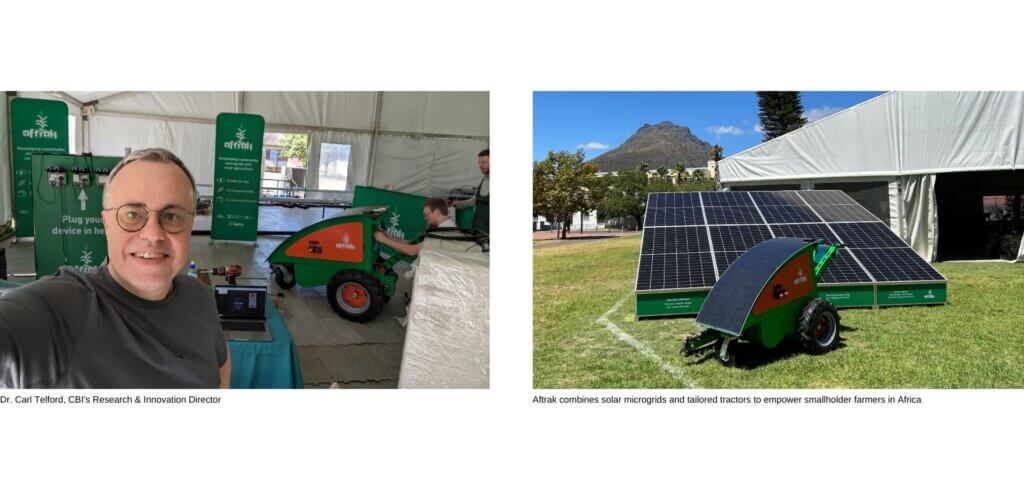
24 hours of innovation
In February, you went to South Africa to demonstrate Aftrak's capabilities. Before heading to South Africa, what were you hoping to accomplish with the demo?
Our first goal was to have all the systems up and running smoothly. The team from Loughborough did an amazing job in this regard. Just getting the units shipped was hard enough in a short time. It was a real challenge, but seeing it all come together and work was just incredible.
How did people react to Aftrak, and what kind of feedback did you get right off the bat?
The response we received was overwhelmingly positive. People were impressed by our team's professionalism and how well everything was set up. They also seemed curious about the Aftrak unit itself, asking what it was, which led us to hold a few mini-training sessions. The Solar Array, in particular, got a lot of attention, with several attendees asking about purchasing it!
You and the team pulled off a 24-hour demo marathon. How did it go, and what were some standout moments?
The 24-hour demo was all about proving that our system could reliably generate 90kW/h of electricity. We exceeded those expectations, which was fantastic. We also wanted to prove the tractor worked. So we got it to dig in a sand pit and power a chest freezer and a tea urn. One funny moment was during the night when we could monitor energy usage and tell the exact time when the security team was making tea!
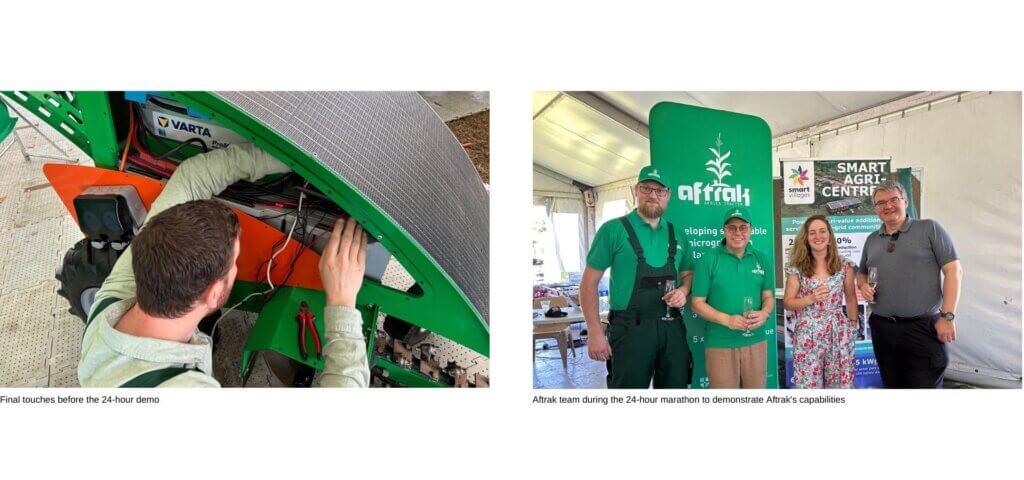
Redefining farming strategies
Deep bed farming is central to Aftrak's strategy. Can you tell us about this method and the difference it makes for the farmers and communities?
In some parts of Africa, a hard layer beneath the soil stops water and roots from penetrating, which is terrible for farming. Our partner Tiyeni developed Deep Bed Farming, which is a proven method that breaks up this layer, increasing crop yields, reducing flooding, and providing additional revenue for smallholder farmers. This technique, however, requires a lot of manual labour. Unless you use an Aftrak unit, which can do it for you.
Trips like these always have their surprises. What was something unexpected that happened during your time in South Africa?
One of the most unexpected things was a sudden power outage during our setup, which is a huge issue in South Africa. At one point, the entire demo tent went dark! However, we quickly hooked up our tractor to the power supply, lighting up the tent again and allowing everyone to continue their preparations.
With the announcement just around the corner, how do you feel about Aftrak's chances?
It may sound like a cliche, but making it to the final five is the real achievement. Just getting on the stage at the Milken conference is already a win for me. I believe we have a chance, but I don't have any additional expectations from this point on. I don't think we could have done any more in terms of preparation, and I have confidence in the team going forward, whether we win or not. That's all I have to say!

Aftrak's vision for the future
Looking down the road, what's the big dream for Aftrak? Where do you see it going, and what kind of impact do you hope it'll keep having?
It's very straightforward. We want to provide access to energy, double crop yield, reduce flooding, and enable economic and literal empowerment for millions of people in sub-Saharan Africa. However, to achieve this, we have a lot of work ahead of us.
We need to establish a company or, at least, find some way of building it on a large scale. Additionally, we must ensure the system is affordable for end-users. Despite these major challenges, we have made huge progress in the last 18 months, and I believe these are achievable.
Among all the milestones Aftrak has achieved so far, is there one that stands out as a 'wow' moment for you? What made it so memorable?
There are two. The first was when I saw the Aftrak unit in person at Loughborough University, all set to ship out to South Africa. It made all of it seem real. The second moment was when I arrived at the demo site in Stellenbosch. There, I saw all the equipment being set up, and I also met the team from Malawi for the first time in person.
At that point, I remembered Jonathan's initial idea that we had discussed in the hotel bar. A lead-battery tractor? At that time, I told him he was crazy. But the more we explored the idea, the more it made sense. In Stellenbosch, after seeing the people and the technology, my belief in what we were doing took off like a rocket.
We live in an era when smart homes have become part of our everyday lives and energy storage systems are changing the way we think about energy.
Growing up, many of us were captivated by the portrayal of modern and futuristic homes on television. Each depiction was unique, yet they all shared a common charm—a certain "wow" factor that held our gaze, sparking imagination about the endless possibilities technology could bring to the future. Although we may not have parking spots for family spaceships in our backyards just yet, the vision of the future we once admired is closer to reality than we might think.
Today, we live in an era when smart homes have become part of our everyday lives. Our houses now integrate various inventions, all harmoniously working together. By integrating smart technologies that make our homes more energy efficient, we're taking steps towards preserving our planet and addressing the ongoing climate crisis.
Technology meets sustainability
An example of such smart technology is a battery energy storage system. This modern yet increasingly common technology enables us to capture and store energy for later use, marking a shift in how we power our homes. This article takes you on a journey through the modern home, exploring practical and innovative uses of energy storage systems. Transforming what may once have appeared as science fiction into part of the solution for a greener, more sustainable lifestyle, energy storage systems are changing the way we think about energy.

The tour already begins outside the house, where the renewable energy narrative forms under the open sky. Solar panels, discreetly placed on the roof, capture and convert the sun's warmth. This stored energy then finds its way back into the house, supplying hot water for daily use or heating indoor spaces, making every drop of sunlight count. This highlights how sustainability and modern living go hand in hand, showing that even our garden can play a role in powering the home.
As we enter the house and step into the living room, the last rays of daylight fade into the soothing glow of several desk lamps, all backed up by energy stored from today's sunshine. The television, gaming consoles, and even the WiFi router sip electricity from the reservoir of clean energy. This seamless integration of energy storage systems allows us to relax in front of the television after a long day or cosy up on the sofa with a favourite novel under the warm light of the lamp without giving a moment's thought to outside energy constraints.
Smart energy in action
Moving into the kitchen, the narrative of energy efficiency continues. Here, everyday activities continue as usual but with a green twist. Appliances, backed up by an innovative energy storage system, manage power usage with precision. The refrigerator hums quietly to keep the food fresh while the oven preheats for dinner, and the dishwasher stands ready, all running on stored energy. The effortless way the kitchen incorporates and utilises stored energy highlights the real-life benefits of energy storage systems, seamlessly blending functionality and sustainability.
Moving further into the house, we find ourselves in the utility area. Here, the air thrums with the quiet power of energy storage systems, balancing the home's temperature through a clever heat pump paired with batteries. These systems allow solar energy to efficiently power the heat pump, which can then be used to keep the house warm or provide hot water, even long after the sun has set.

Heading to the garage, the connection between energy management and mobility can be seen in action. An electric vehicle has become an essential part of the home's energy system, quietly charging and preparing for its next journey. Here, the vehicle-to-home power-sharing concept comes to life, allowing energy to flow back into the house during peak times or unexpected outages.
Green future with energy storage
Concluding the journey through the house, we can see energy storage systems integrated into our daily routines as a glimpse into a more sustainable future. From the warm comfort of the living room through the bustling kitchen and out into the garden, we see a snapshot of what could become the norm.
As the European Union strides towards a greener future with initiatives such as the Green Deal, homes equipped with battery energy storage systems are helping us get closer to energy independence. The battery energy storage market is predicted to grow significantly, and all battery technologies will play an important role. In light of the pressing need for climate action, these systems represent vital components of sustainable living and a greener, technologically advanced world.
LoCEL-H2, a four-year initiative, is bringing innovative energy solutions to remote communities in Africa. In this interview, Dr. Athanasia-Maria Tompolidi, CBI's Research & Innovation Manager, discusses the project's goals, technological innovations, and commitment to community empowerment.
Let's start with the basics. Can you tell us what the LoCEL-H2 project is about and what it aims to achieve?
Of course. LoCEL-H2 is an innovative, four-year project under Horizon Europe that kicked-off in January 2023. It aims to bring scalable microgrid systems to isolated communities. These communities often lack steady access to energy like electricity and clean cooking facilities, which is taken for granted in the developed countries.
We combine solar power, advanced lead battery systems, and green hydrogen technology to offer sustainable and affordable energy solutions. And it is not just about technology. Empowering women in these communities is a big part of our project, especially in places like Zambia and Ivory Coast. We have an amazing team of partners from all over the globe, bringing diverse expertise to the table.
In a world teeming with green innovations and an urgent need for sustainable solutions, what sets LoCEL-H2 apart from the crowd, and why is it particularly crucial now?
LoCEL-H2 uniquely intertwines new technology with Social Sciences and Humanities (SSH) insights, hitting that crucial spot where technical solutions meet community needs head-on. We are in sync with the EU's hydrogen strategy and REPowerEU plan, introducing innovative ways for decarbonisation and independence from fossil fuels. By introducing green hydrogen solutions in developing countries, LoCEL-H2 contributes to global decarbonisation efforts and supports the European Green Deal's objectives.
Given the challenges posed by climate change, especially for vulnerable countries, projects like LoCEL-H2 provide essential tools for Climate Adaptation. It addresses critical issues such as food security, water supply, education, disasters risk reduction and public health.
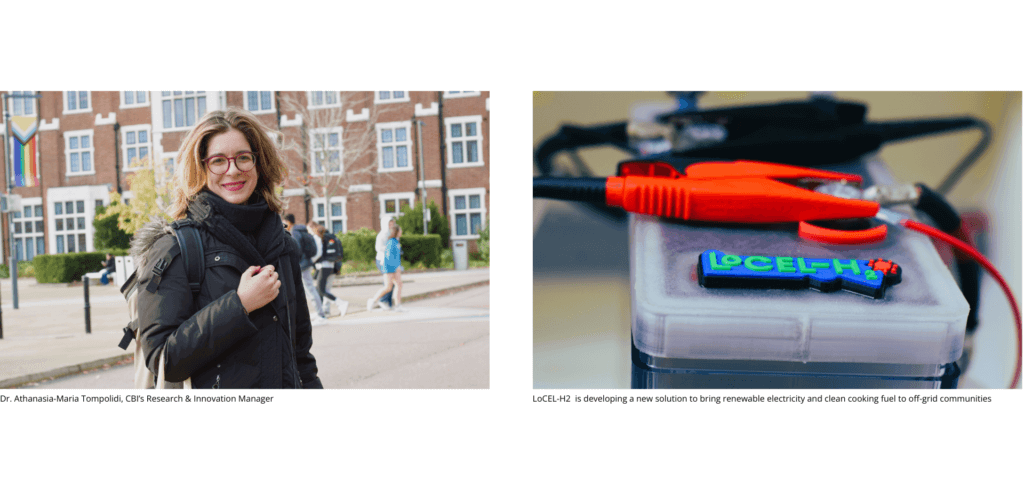
From sunlight to energy storage
Innovation is key to the project. Could you explain how green hydrogen and advanced lead batteries work and why they're game-changers?
LoCEL-H2 stands on three innovation pillars. The first is a scalable, plug-and-play microgrid that uses solar energy to power communities. The second is a battery energy storage system tailored for households, small businesses, and community infrastructures to ensure a steady energy supply. The highlight is our community-shared battery-electrolyser, a novel system for energy storage and green hydrogen production.
Our vision with LoCEL-H2 is simple: we want to re-power the communities, quite literally. These smart innovations contribute to tackling energy poverty and provide sustainable solutions for those lacking access to reliable energy.
Could you give us an update on how the project is progressing and any significant milestones you've hit so far?
This past year has been remarkable. LoCEL-H2 has made significant progress thanks to our team's hard work and collaboration. We have mapped out stakeholder databases across continents. Our team has visited African and Pakistani villages to learn more about the communities and their energy needs. Key technical milestones of the project include the strategic design of our battery-electrolyser and advancements in energy storage solutions.
Our team has been meeting regularly, both online and in person, to ensure we stay on track. We had a face-to-face General Assembly in Naples in the autumn of 2023 and are looking forward to the upcoming one in Brilon, Germany, in the spring of 2024. It is very reviving to keep the in-person interaction.
Communities thriving on clean energy
Everyone's excited to see results. What are the short-term and long-term benefits LoCEL-H2 brings to the table?
LoCEL-H2 aims to change the way we access energy while promoting social and economic growth. Our focus is on innovative microgrid technology that combines battery-electrolyser and advanced lead battery energy storage to meet the unique needs of communities.
In short term, our goal is to empower communities by providing them with education and training on how to manage and benefit from these energy systems. We are working closely with people on site to ensure they are not just recipients but active players. This approach helps to create job opportunities and stimulate local economies.
In long term, we envision these efforts blossoming into sustainable, self-sufficient communities thriving on renewable energy. By introducing this technology, we're also helping to position the EU as a leader in clean energy innovation, supporting the green energy transition.
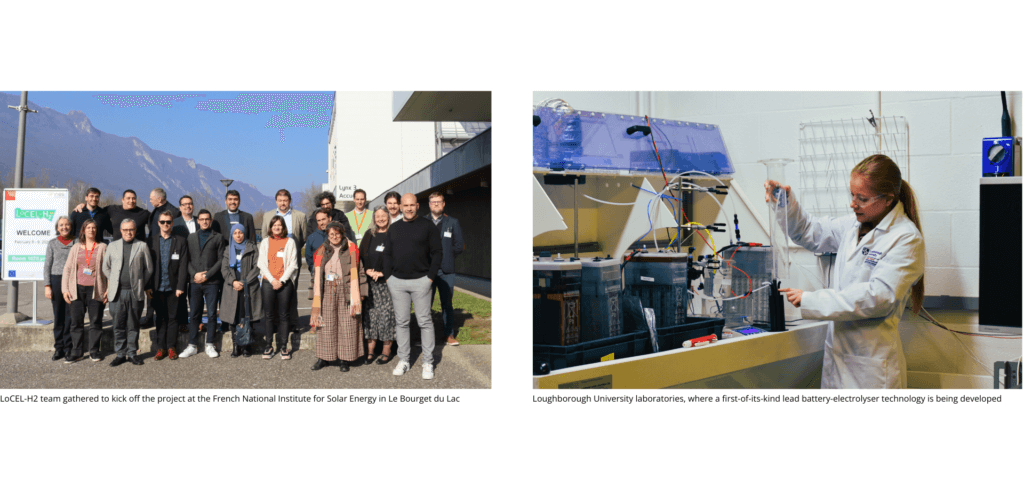
Beyond energy access, how does the project aim to influence societal change, for example?
At the heart of LoCEL-H2 is a deep commitment to societal change, particularly through empowering women in some of the world's most vulnerable areas.
We aim to see these women replacing old, smoky stoves with clean, green hydrogen, stepping into new roles, and changing the game in their communities. Our goal is to give them the time and resources they need to engage in social activities, achieve financial independence and be in charge of their own lives.
Moreover, with cleaner cooking, we are looking towards a greener future for them and the entire planet. It's a big vision, but with every step, we're closer to making it a reality.
Energy equity for sustainable future
Looking ahead, how do you plan to expand the reach of LoCEL-H2 to empower more communities worldwide?
Our aim for the future is to expand the impact of LoCEL-H2 beyond the current scope. We are working on integrating renewable energy into the very fabric of communities in need. This is particularly important when the world faces high energy demands and climate concerns, and sustainable solutions are needed more than ever.
Aligned with the EU's strategic priorities to mitigate climate change, LoCEL-H2 is committed to supporting the transition towards green energy across the globe, with a special focus on Africa, where the need is most acute. This can be achieved with collaborations with initiatives like Energising Africa and the Clean Cooking Manifesto. Increasing access to clean cooking is a topic that has been high on the global climate agenda, for example in the last United Nations Climate Change Conference COP28, and LoCEL-H2's technology is particularly well suited to be part of the solution.
Our approach is about connecting, sharing, and collective learning, which we believe to be some of the most valuable aspects of the project. We are sparking a movement through interactive webinars, training sessions, and collaboration with sister projects under Horizon Europe.
So, when discussing what's next for LoCEL-H2, it's all about showing that energy equity and a sustainable future are possible. LoCEL-H2 is dedicated to providing access to clean, green energy to communities worldwide. Its mission is to empower, inspire, and support the adoption of sustainable living practices worldwide.
Uncovering the key role of energy storage in Europe's green revolution
As we step into a new year marked by record-breaking temperatures, the urgency to address climate change intensifies. A recent analysis has confirmed 2023 as the warmest year on record, with over 200 days setting new daily temperature records.
It is crucial that cities join the shared drive to mitigate the climate crisis and transition to greener, more sustainable energy. This was emphasised at COP28, where fossil fuels were officially recognised as the primary cause of climate change for the first time after 28 years. Within Europe, the European Commission is leading the way by introducing ambitious initiatives such as the Fit for 55 package and Effort Sharing Regulation to shift towards a low-carbon economy. These initiatives have sparked innovation and collaboration among European cities as they strive to embrace a more sustainable path.
The second part of our series on sustainable cities highlights the transformative efforts of three European cities – Helsinki, Ljubljana, and Sofia – in embracing energy storage to spearhead their sustainability goals. These cities serve as examples of how local governments can initiate a transition towards renewable energy, sustainable transportation, and emission reduction.

Embracing sustainable energy solutions
In the northern part of Europe, Helsinki is a pioneer in sustainability. The Finnish capital has embraced energy storage as a key element in achieving its goal of carbon neutrality by 2030. The city has launched an inventive project in collaboration with its energy provider to integrate battery energy storage into electric vehicle charging stations. The initiative taps into the potential of electric vehicles as mobile energy storage units, capable of storing excess energy generated from renewable sources. This energy can power the vehicles or be returned to the grid, making the energy ecosystem more connected and resilient.
According to the city's mayor, Juhana Vartianten, building a sustainable future is the most pressing issue we face today. "Helsinki wants to encourage cities around the world to embrace sustainability work and take concrete action. The coming years will determine the direction humanity takes, " said Vartiainen in the 2023 Voluntary Local Review, "That is why we must act now, and we must act together. We still have a long way to go, but fortunately, we are heading in the right direction."
Sofia, the vibrant capital of Bulgaria, is another city that has made sustainability a cornerstone of its urban development strategy. The city has implemented a number of innovative projects that are helping to reduce its reliance on fossil fuels and improve energy efficiency.
One of Sofia's most notable initiatives involves the installation of intelligent batteries throughout the city's public transportation network. These batteries act as mobile energy storage units, allowing buses and trams to store energy while braking or coasting downhill. The captured energy can then power the vehicles as they climb uphill or accelerate. This approach has shown promising results during its trial phase, with an expected 10-15% reduction in fuel usage and a 30% decrease in harmful carbon emissions, contributing to cleaner air and a more sustainable transportation system.
In addition to the environmental benefits, Sofia's battery storage project also streamlines the public transportation system, reducing the need for frequent recharging. The batteries provide a clean source of energy that can be used during peak hours, allowing passengers to rely on a more efficient public transportation system.

Harnessing the power of energy storage
Ljubljana, the capital of Slovenia, is known for its eco-friendliness and sustainable urban development. The city is taking steps to make its buildings sustainable while preserving its rich cultural heritage. One way Ljubljana is achieving this balance is by implementing energy storage systems in public buildings and infrastructure. The Ljubljana City Hall is equipped with a battery storage system that can store energy from the sun. Moreover, Ljubljana aims to expand its energy-saving efforts beyond City Hall by installing energy storage systems in public buildings such as schools, libraries, and other facilities.
Integrating energy storage systems into public buildings is a win-win solution for both cities and citizens. By doing so, the city enhances energy security, lowers energy expenses, and provides backup power during grid outages. This not only reduces the city's environmental footprint, but also provides its citizens with reliable access to energy.
In a world where climate change looms, Helsinki, Ljubljana, and Sofia are examples of how innovation and energy storage can shape a sustainable future. These cities have set the bar high by adopting measures that align with the EU's Green Deal goals, aiming to reduce carbon emissions and switch to renewable energy sources.
Helsinki's electric vehicle charging stations, Ljubljana's public buildings integrated with battery systems, and Sofia's intelligent battery storage for public transportation all show how technology can help create a cleaner, more resilient planet. By reducing carbon emissions and embracing renewable energy sources, these cities are leading the way in the fight against climate change.
Our colleagues Matt Raiford, CBI's Senior Technical Manager, and Alyssa McQuilling, CBI's Research and Innovation Manager, were featured in the latest Beyond Lithium podcast episode hosted by Nate Kirchhofer from BioZen Batteries. The discussion revolved around the work of CBI, research and innovations driving the industry, exciting new projects, unique features of advanced lead batteries and the future of energy storage.
CBI's projects and mission
Matt kicks off the conversation by outlining CBI's mission as a pre-competitive global research organisation with over 130 members worldwide. According to Matt, the priority of pre-competitive research lies in CBI's focus on applications and innovations benefiting the entire lead battery industry. "It's like taking a step back and looking at first principles," Nate summarises, as both guests noted.
The conversation reveals CBI's projects, showcasing an advanced lead battery technology for different applications. Matt and Alyssa shed light on CBI's involvement in global government funding opportunities, with recent projects spanning Europe and the UK. Alyssa introduces the current LoCEL-H2 project, featuring the unique battery-electrolyser. The technology stores energy to produce electricity on demand and utilises initially unwanted side reactions to produce hydrogen for cooking purposes. Another noteworthy project, Aftrak, showcases a solar advanced lead battery-powered tractor for deep-farming piloted in Africa. "These projects highlight something really important about batteries in general, that they can enable a whole new way of living," noted Matt.

A closer look at lead batteries
The podcast takes a turn as the team delves into the chemistry of lead batteries. "Lead batteries have been around for a hundred years, and they've been doing a lot of work," Nate acknowledges, addressing the never-ending question of getting people excited about lead. Dispelling misconceptions around lead batteries, Matt and Alyssa passionately discuss their unique benefits, including sustainability, an increasingly relevant factor in today's society. "Lead is the most recyclable product in the world," Matt emphasises, "This results in a recycling rate of over 99% in the US and Europe."
Energy storage takes centre stage in the conversation, as it has been emerging prominently in political dialogues worldwide. According to Matt, the performance rate of lead batteries is the main driver for energy storage. First invented in a French man's backyard, lead batteries evolved drastically into well-adapted products. As a scientist, Matt wondered how this technology didn't advance when he came across it years ago. The explanation is simple: there was no market driver. Nowadays, there is one. "That's what we're doing at the CBI. A lot of our research is inspired by the needs of the market," Matt explains.
The future of energy storage
"We need a lot of energy storage integrated into the grid as we decarbonise and electrify more," Alyssa states, touching on the need for diverse technologies to meet the escalating need for clean energy. This offers countless opportunities across sectors. The demand for energy storage and battery innovations go hand in hand. Improvements in cycle life and battery materials are a few examples of research in national labs, where new technologies and techniques are involved to better understand batteries at a fundamental level.
The podcast concludes with a forward-looking perspective on the future of energy storage. The energy storage sector's scale and pace of development promise a huge demand for batteries. "We see a steady growth for lead. For energy storage, the sky's a limit. We're talking about terawatt-hours batteries needed by 2030," Matt says, highlighting the increasing need for diverse technologies to coexist harmoniously. "We just have to create a cheap battery that lasts a long time," he concludes with a smile.

A special thanks to our colleagues, Matt Raiford and Alyssa McQuilling, for this insightful conversation, showcasing the work at CBI and providing valuable insights into the role of lead batteries in shaping a sustainable and energy-efficient future. Listen to the full podcast on the Beyond Lithium website.
NEWS RELEASE - 21 November 2023
The ELBC battery innovation conference has issued a call for papers ahead of the event which takes place in Milan, between September 16-19.
Jointly organised by the International Lead Association and Consortium for Battery Innovation, the event’s technical committee is seeking abstracts on all aspects of lead battery technology with a specific focus on:
Dr Alistair Davidson, Director of the Consortium for Battery Innovation, said: “This is always a much-anticipated event for the lead and lead battery industries and we’re looking for high quality submissions that showcase recent innovations and all the latest lead battery research.”
Abstracts can be submitted online by visiting www.elbcexpo.org
More than 1000 attendees are expected at the event in Milan which includes an expo with up to 140 exhibitors from across the lead battery value chain.

About the Consortium for Battery Innovation (CBI)
For more than 25 years, CBI has delivered cutting-edge research taking lead batteries to a new level for energy storage and automotive applications. With an expert panel made up of the world’s leading battery manufacturers and research specialists, CBI is setting the standard for advanced lead batteries and the next generation of energy storage.
The Consortium for Battery Innovation's impactful presence at European Commission’s SET Plans Conference
In the ever-evolving landscape of energy storage, the Consortium for Battery Innovation (CBI) stands at the forefront, driving advancements in battery technology. At the recent SET Plans Conference in Viladecans, the CBI had a strong presence with its Senior External Affairs Manager, Nicola Filizola, showcasing the consortium's commitment to fostering collaboration and innovation within the energy transition landscape.
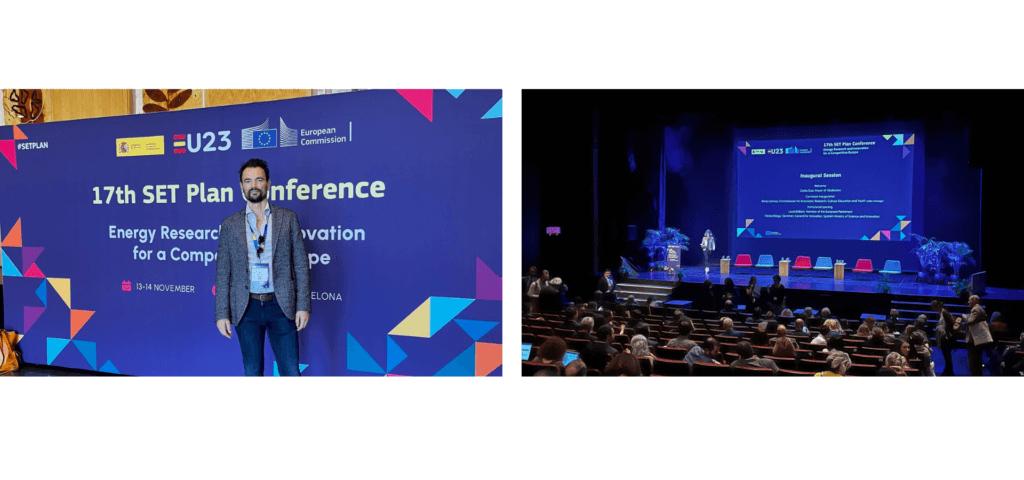
The revamped SET Plans to address energy policy
The European Strategic Energy Technology (SET) Plan was established in 2007 and since the creation of the energy union in 2015, it became one of the main instruments of the energy union’s 5th pillar on research, innovation, and competitiveness.
During the conference, the European Commission confirmed its commitment to reinforcing the SET Plan, and its acknowledgement of the key role that the initiative will play in delivering the European Green Deal, REPowerEU and the Green Deal Industrial Plan, with a particular emphasis on the Net Zero Industry Act. This will help to accelerate the clean energy transition, increase the EU’s competitiveness, and ultimately deliver the EU’s ambitious climate and energy objectives.
Boosting European competitiveness and technology sovereignty
The EU is a frontrunner in the deployment of sustainable energy solutions and in clean energy research and innovation. However, this leadership is not matched by an equally strong position in the manufacturing of net-zero technologies.
To strengthen Europe’s technological and industrial sovereignty, the European Commission has proposed the Green Deal Industrial Plan, which includes the Net-Zero Industry Act for increasing the EU manufacturing capacity of net-zero technologies, and the Critical Raw Materials Act for securing the supply of critical raw materials. The revised SET Plan will help convert innovations into marketable solutions that can be produced and scaled up in the EU.
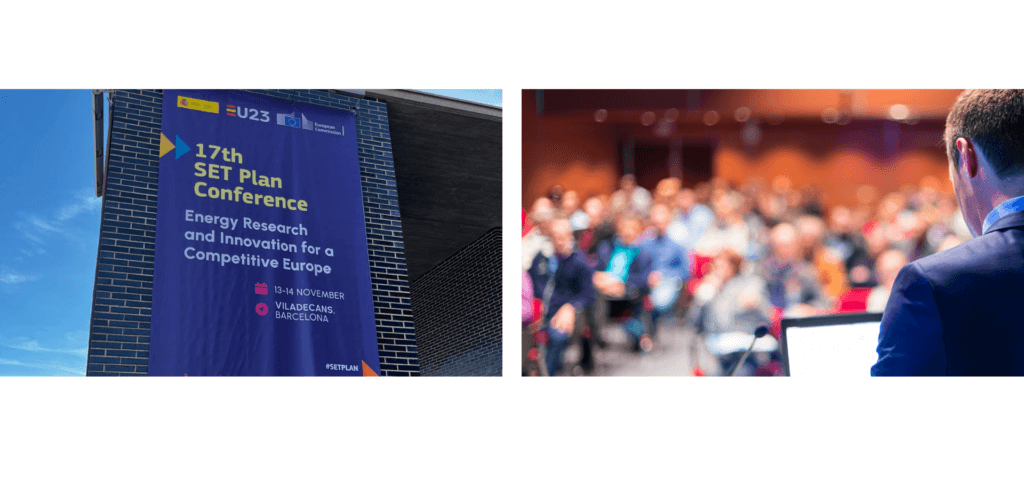
Advancing battery technologies
The SET Plans Conference served as a global platform for discussing Sustainable Energy Technology Plans, bringing together experts, policymakers, and industry leaders to deliberate on the future of energy technologies. The CBI consortium's presence was crucial in highlighting the pivotal role that advanced lead battery technologies play in achieving sustainable energy goals.
As the battery industry continues to play a pivotal role in the global transition to clean energy, the CBI's active participation in conferences of this nature reinforces its position as a driving force in shaping the future of energy storage.
For more information on how to develop and reinforce the Brussels footprint for the advanced lead battery ecosystem, feel free to contact our Senior External Affairs Manager at nicolafilizola@batteryinnovation.org
Funding: U.S. Department of Defense
Duration: January 2021 - May 2023
Project partners: Consortium for Battery Innovation, Paragon Solutions, Inc.
Objective: Develop transportable and robust lead battery energy storage systems that can be integrated into tactical microgrids
Green energy for Africa supported by micro electric agriculture
Funding: Innovate UK
Duration: April 2023 – April 2024
Project partners: Consortium for Battery Innovation, Loughborough University, Tiyeni
Aftrak aims to develop a green electricity solution for rural communities combining a solar energy microgrid with a micro electric tractor to mechanise land preparation. Advanced lead batteries inbuilt in the micro electric tractor play a central role in this green energy system, storing solar energy and providing it during land preparation activities.
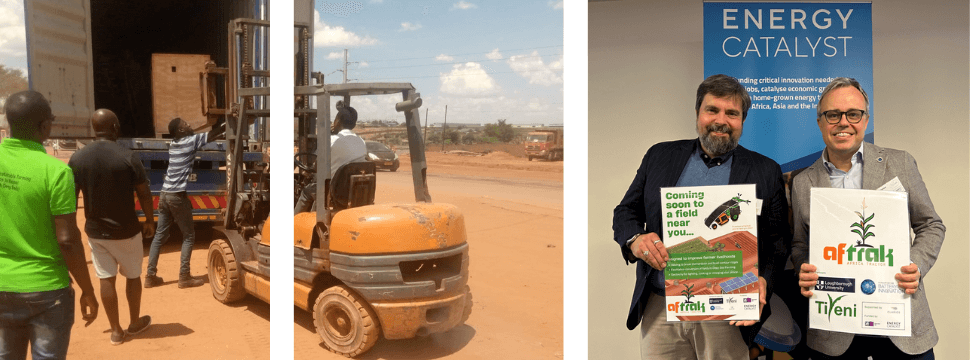
The micro electric tractor also aids the implementation of Deep Bed Farming, an agricultural methodology especially designed for Malawian soils developed by project partner Tiyeni. This system can provide a significant agricultural revenue boost to sustain microgrid-related costs and encourage further energy access investments.
The project reached the final of the Milken-Motsepe Prize in Green Energy, and an extra field demonstration of the system will be carried out South Africa.
For more information visit project's website: https://www.lboro.ac.uk/research/aftrak/

NEWS RELEASE - 17 November 2023
A new call for research proposals to support advanced lead battery innovation for energy storage systems (ESS) has been launched by the Consortium for Battery Innovation (CBI), the world’s only pre-competitive lead battery research consortium.
We are seeing an unprecedented effort to implement climate targets across the globe, led by the ambitious commitments by the European Union to become climate-neutral by 2050 and by the US to reduce emissions by 50% by 2030. According to Avicenne Energy (CBI’s Market Report 2023), the ESS market is forecasted to grow from 237 GWh in 2022 to 616 GWh in 2030. Batteries stand out as one of the big facilitators of this global shift to clean energy considering any scale of implementation, from industries to residences.
Recent analyses agree that a significant increase in battery demand will occur by 2030. Noteworthy examples are the forecast by the International Renewable Energy Agency (IRENA) that cumulative global renewable energy battery storage capacity will increase from 17 GW in 2020 to 359 GW in 2030 and estimates by the International Energy Agency (IEA) showing battery storage capacity for solar power integration only will increase at least five times by 2030. Demand will be so large it cannot be met by one battery technology alone. Such prognoses are a significant opportunity for growth of the lead battery market as a potential technology that can meet all the technical requirements on a mass market scale.
Building on the research priorities and research and innovation pathways defined on CBI’s Technical Roadmap, this call for proposals aims to stimulate projects further demonstrating improvements in lead battery performance for ESS applications. Dr Matthew Raiford, Senior Manager of CBI’s technical program, said: “The growth of the battery energy storage market is a great opportunity for advanced lead batteries, and the industry is committed to showing progress toward batteries that last longer and have higher energy density. CBI’s research program and this new request for proposals will directly contribute to that goal.”
CBI’s open call specifies two work proposal possibilities consisting of a) technoeconomic analyses of lead battery ESS or b) material science studies of failure of lead batteries in ESS. Submission of proposals is open until 22nd January 2024. More information on the desired work and guidelines for proposals is available here.

About the Consortium for Battery Innovation (CBI)
For more than 25 years, CBI has delivered cutting-edge research taking lead batteries to a new level for energy storage and automotive applications. With an expert panel made up of the world’s leading battery manufacturers and research specialists, CBI is setting the standard for advanced lead batteries and the next generation of energy storage. For more information, visit our website: http://www.batteryinnovation.org
Dr. Matthew Raiford is available for interview. For more information, please contact CBI’s media contact: Nicola Filizola, +32 489 17 76 60; nicola.filizola@batteryinnovation.org
Press release
Brussels, 9 November 2023
A system using advanced lead batteries to power a micro electric tractor tailored to the African market was selected as one of the finalists of the Milken-Motsepe Prize in Green Energy.
This innovative tractor design is being developed in Aftrak, a groundbreaking project funded by Innovate UK. The initiative brings together expertise from the Consortium for Battery Innovation (CBI), Loughborough University and UK- & Malawi-based charity Tiyeni, and the support of lead battery manufacturer VARTA.
Microgrid solutions for off-grid rural communities have high costs of implementation and maintenance that often cannot be covered by the communities, dissuading infrastructure investments. Aftrak is addressing this challenge by combining a solar energy microgrid with a micro electric tractor to mechanise land preparation. The tractor accelerates the implementation of Deep Bed Farming, an agricultural methodology developed by Tiyeni especially designed for Malawian soils. This system can provide a significant agricultural revenue boost to sustain microgrid-related costs and encourage further energy access investments.
Lead batteries inbuilt in the micro electric tractor play a central role in this green energy system, storing solar energy and providing it during land preparation activities. Dr Carl Telford, member of the Aftrak team and CBI Senior Research and Innovation Manager, said: “This is a very promising application of lead batteries that can bring real positive impact to rural communities. Having the recognition by the Milken Institute and the Motsepe Foundation is an important endorsement of the viability of lead batteries in green energy solutions.”
The Milken-Motsepe Prize in Green Energy is a global competition to reward innovators working to increase access to green, renewable energy in Africa. This year, over 160 teams from 36 countries presented their visionary ideas to the jury.
Selected as one of the five finalists, the Aftrak team will receive $70,000 in funding to further develop and test the system in a live field demonstration in South Africa in February 2024. Aftrak also remains in the competition for the final prize of $1 million, whose winner will be announced in May 2024.

About the Consortium for Battery Innovation (CBI)
For more than 25 years, CBI has delivered cutting-edge research taking lead batteries to a new level for energy storage and automotive applications. With an expert panel made up of the world’s leading battery manufacturers and research specialists, CBI is setting the standard for advanced lead batteries and the next generation of energy storage. For more information, visit our website: http://www.batteryinnovation.org
Dr Carl Telford is available for interview. For more information, please contact CBI’s media contact: Nicola Filizola, +32 489 17 76 60; nicola.filizola@batteryinnovation.org
Europe’s bold plan for clean air and economic growth
Climate change is unfolding right before our eyes. While discussions surrounding it have persisted for decades, the time for mere discourse has passed. This year, we saw Arctic sea ice hit record lows during winter, endangering polar wildlife and accelerating global warming. In contrast to the ice decline, Europe experienced devastating floods in many countries. Heavy rains and high river levels caused widespread flooding, affecting communities and infrastructure. These are not isolated incidents but signs that our planet is in distress. It is now crucial to translate words into action. That's precisely where the European Commission’s Fit for 55 package takes the stage. As a vital part of the EU's Green Deal, this visionary plan is strategically crafted to tackle the pressing challenges of climate change. Its main objective is to reduce greenhouse gas emissions in the European Union by at least 55% by 2030. As the world heats up and our environment gets sadly more unpredictable, Fit for 55 steers towards a greener, more sustainable future.
At the heart of this change is energy storage. In the context of the Fit for 55 package, there are several reasons highlighting its importance. Energy storage fuels the transition to environmentally friendly transportation and green mobility. This is possible through innovations like smart grids and battery systems powering electric buses in urban areas. Such integration of energy storage with public transportation not only reduces emissions but also makes green mobility accessible. Energy storage opens up job opportunities and boosts local communities. Furthermore, it is crucial in making energy more affordable, offering a safety net for those grappling with rising energy costs.
Driving the energy transition
As a result of the Fit for 55 initiative, energy storage operates on three essential fronts: improving air quality, generating job opportunities, and stabilising energy prices.
Air pollution is a serious problem affecting millions of people around the world. It can cause respiratory problems, heart disease, and cancer. Improving air quality is one of the key goals of the Fit for 55 package. It sets a bold target: zero emissions from new cars and vans by 2035. Energy storage is a vital driver in this journey to reduced air pollution and eco-friendly mobility.

Electric cars are the ambassadors of emission-free transport, and energy storage has the ability to power them. Energy storage also provides backup power for charging stations, ensuring that electric car owners can always find a place to recharge. Electric cars produce fewer emissions than traditional diesel-powered cars, and increasing their use helps to improve air quality. It is a stride towards a future defined by greener travel, with less smog and more fresh, clean air.
Cities and towns all over Europe are tapping into the potential of energy storage, harnessing electricity from renewable sources like the sun and wind. This stored energy fuels the urban transit networks, providing a lifeline to buses and trams. The result? A sharp decline in air pollution, quieter streets, and reduced reliance on fossil fuels. Energy storage acts as a safety net for electric buses and trains, improving the resilience and reliability of public transportation systems. In the event of a power outage, energy storage can provide backup power, ensuring that the city's transport continues to operate. Energy storage becomes an indispensable sidekick as the world shifts towards green transportation, creating a healthier environment.
Added to the industrial new development, there is another aspect of European’s stagnating and lasting issue: high employment rates. The job market is evolving unprecedentedly, leaving job seekers and employers grappling with new challenges and opportunities. As the global appetite for renewable energy grows, so does the demand for a diverse and skilled workforce. The Fit for 55 package aims to create more job opportunities within the clean energy sector. Energy storage, among other clean energy solutions, calls for an array of professionals, from engineers and technicians to electricians and software developers.
When an energy storage company establishes a new factory in a rural area, it does not only bring job opportunities to the community but also stimulates the local economy. The ripple effect is significant, as various services are required to support the factory. Construction workers, transportation services, and material suppliers all benefit from the newfound wave of activity. This synergy, driven in no small part by energy storage, highlights the potential of clean energy to power our homes, livelihoods, and economies.
Affordable energy is a pressing concern for communities and individuals globally. The COVID-19 pandemic and the war in Ukraine have aggravated the energy crisis, pushing energy prices to record highs. This is having a devastating impact on people and businesses, particularly those who are already struggling to make ends meet. The Fit for 55 package seeks to make energy more wallet-friendly for everyone, and energy storage is central to this vision.
Energy storage allows storing electricity during quiet hours when it's less expensive and tapping into these reserves when electricity prices skyrocket during peak demand. It's akin to purchasing energy at a discount rate and seeing savings grow.
Energy storage fosters self-reliance, particularly in regions prone to power hiccups or environmental concerns. Community solar initiatives, often supported by energy storage, are expanding access to solar energy, cutting the cords to the traditional power grid. This approach delivers a double victory, benefiting our finances and the planet's well-being.
Integrating an energy storage system for homeowners with solar panels complies with having a personal vault for energy. During the day, the excess energy is safely stored away. This energy is later used to lighten homes without sending electricity bills soaring. Energy storage systems are transforming the energy landscape, addressing the energy affordability crisis and making it more accessible for everyone.

Towards a greener future
While the Fit for 55 package may initially seem like a distant, abstract concept, its impact is already spreading through our daily lives. Together with energy storage, this visionary strategy has the potential to redefine our homes, our cities, and our communities. Energy storage fuels the shift to environmentally friendly transportation, cleansing the streets and reducing our dependence on fossil fuels. Energy storage solutions create job opportunities, uplift local communities, and place affordable energy within reach.
When the Fit for 55 package and energy storage team up, they have the potential to transform societies, reshape our relationship with the environment, and pave the way for a greener, more sustainable world.
Uncovering the key role of energy storage in Europe's green revolution
In the scorching summer of 2023, Europe was gripping an unprecedented heatwave. This extreme weather triggered a series of devastating events, including wildfires raging through Southern France and droughts that left the water reservoirs in Spain critically low. Such disasters were a stark reminder of the pressing need to address climate change head-on, an undeniable call to action.
In response, the European Commission and the cities across the continent have united, propelling Europe toward a more environmentally conscious future. At the core of this collective effort lies the Effort Sharing Regulation, which assigns emission reduction targets to each member state. With their sights firmly set on these targets and a dedicated commitment to combat emissions, European cities are charting a course towards sustainability, driven by innovation and a shared vision of a greener tomorrow.
This article explores three local initiatives - Copenhagen’s and Barcelona’s Climate plans and Tallinn as Europe’s Green Capital. Together, they exemplify how cities actively invest in renewable energy, advocate for sustainable transportation, and advance emission reduction. What unites these cities is their reliance on energy storage, with batteries emerging as integral components within these systems.
A green wave all over Europe
In the heart of Catalonia, Barcelona takes a bold stance in Europe’s ongoing battle against climate change. The city’s Climate plan sets a clear course towards reducing emissions and embracing renewable energy. At the forefront of this environmental mission are energy storage systems, with time-tested batteries powering businesses and homes across the city.
Barcelona’s first energy community epitomises this shift. Along the bustling Barcelona Port, solar panels soak in radiant Mediterranean sun. What sets this community apart is its ability to capture excess solar energy, preventing it from going to waste. Instead, it’s harnessed by energy storage systems. This stored energy becomes a precious resource, fueling essential port operations, from lighting to refrigeration. The Barcelona Port stands as an exemplary testament to the transformative potential of energy storage, pushing the city toward its climate goals one watt at a time.

Copenhagen has set an ambitious goal: to become the world’s first carbon-neutral capital by 2050, as outlined in its Climate plan. This visionary concept encompasses many initiatives, all connected by a central theme, energy storage.
A standout feature of the plan is Copenhagen’s extensive electric bus fleet, powered by battery energy storage systems. These systems store the energy that propels emission-free buses along the city’s bustling streets. In 2021, Copenhagen made waves by introducing 100 electric buses, to reduce annual greenhouse emissions by 5,000 tons. The city’s vision stretches even further, anticipating 50,000 electric vehicles on its roads by 2025, with advanced energy storage technologies seamlessly integrating modernity into urban life.
Copenhagen’s Climate plan encompasses initiatives ranging from retrofitting buildings with energy-efficient technologies to harnessing wind turbines and photovoltaic systems. In this vibrant metropolis, we witness the potential that arises from the marriage of renewable energy and energy storage solutions.
One of Europe's greenest cities is Tallinn. This progressive city with mediaeval charm was honoured with the European Green Capital 2023 title, recognising its ambitious sustainability plans. To achieve carbon neutrality, Tallinn is making substantial investments in renewable energy and energy-efficient initiatives. The city’s strategic approach to sustainability hinges on energy storage and the development of a smart grid, using digital technology to manage the flow of electricity.
A shining example of Tallinn’s commitment to energy storage is Ülemiste City Energy Storage Park. A robust energy storage system is nested within the park, ensuring no clean energy goes to waste. The park reduces the city's dependence on polluting fossil fuels and paves the way for increased local clean energy generation.
Tallinn’s mayor, Mihhail Kõlvart, firmly believes cities will be crucial in achieving European climate and sustainability targets. “European Green Capitals need to take leadership in creating sustainable, resilient and inclusive cities of the future to ensure a high-quality living environment,” stated Kõlvart, emphasising the value of collaboration among cities.

A sustainable energy storage transition
These local initiatives showcase the proactive spirit of European cities in the battle against climate change. In their stories, energy storage is a bridge connecting renewable energy to our daily lives. In Copenhagen, energy storage ensures swift and modern public transportation. In Tallinn, it fuels the city’s green revolution. In Barcelona, it keeps the bustling port community in motion.
With their progressive climate plans, these cities remind us of the importance of energy storage and its role in achieving the goals set by the Effort Sharing Regulation and the European Green Deal. By hopping on the energy storage bandwagon, cities across Europe are speeding toward a sustainable and low-carbon future.
The lead battery industry could be in line for a $10 billion share of the burgeoning energy storage market within the next decade.

Research into upcoming projects and opportunities indicated that the ESS landscape is forecast to be 550GWh by 2030 with a value of $30-$50 billion for all battery technologies.
The lead battery industry has set its sights on securing 100GWh of that potentially lucrative ESS market.
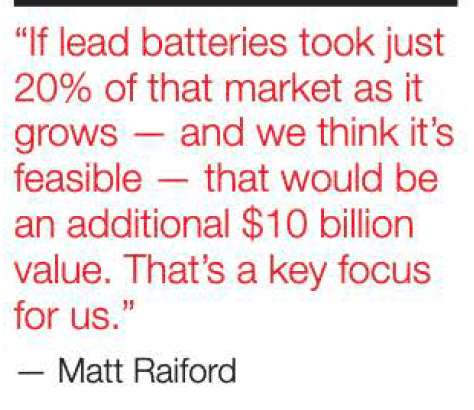
CBI launched its first technical roadmap in 2019 setting specific goals for the end of 2022.
“It was all really market-driven. We used those targets to select our program. And the result of the
projects that we funded have pretty much shown that we delivered on these goals that we set.”
There are now batteries on the market, primarily from our members in the US and Asia, that meet that criteria.
This means there are now have advanced lead batteries on the market-oriented toward ESS that have an impressive globalized cost of ownership for the system, says Raiford.
“The way we view it as battery scientists is cycle life — most key stakeholders look at it from total cost of ownership.
“So we see stationary batteries now that really perform along the lines of lithium.”
Read the full article from Batteries International
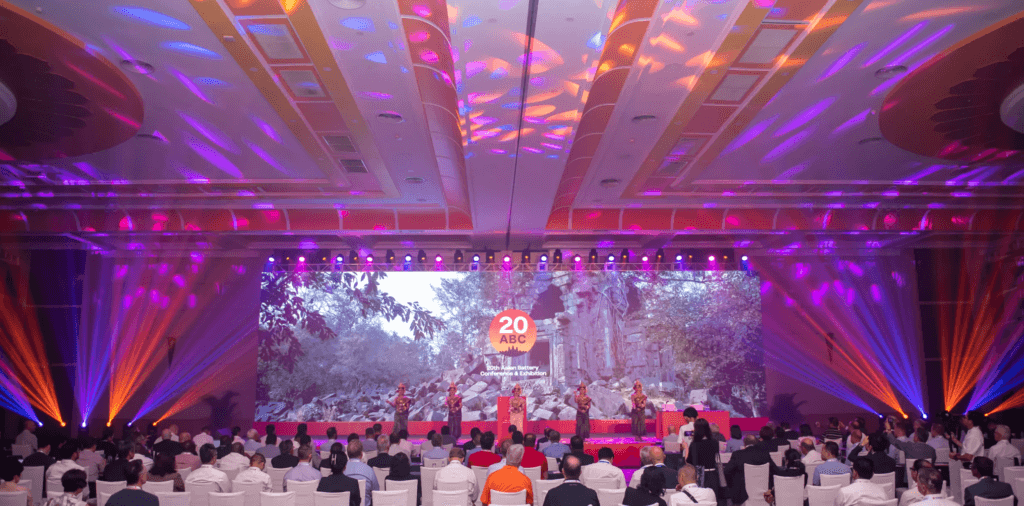
The Consortium for Battery Innovation connected with over 730 attendees from 42 different countries representing 319 different organizations in Siem Reap, Cambodia for the 20th Asian Battery Conference (20ABC) and the Recycle 100 International Secondary Lead Conference and Exhibition that featured global discussions on the world of lead, recycling, lead-acid batteries and energy storage.
CBI Senior Technical Manager, Dr. Matt Raiford said that lead batteries are made and produced in over 100 countries, and the Asian Battery Conference was a great venue to see how Asia, Africa, and other areas of the world are innovating and improving lead battery technology. For instance, CBI member companies, Hammond and Borregard, demonstrated deeper understandings of additive chemistry as a low threshold method to improve lead batteries for many different applications.
CBI participated in the line-up of over 45+ conference speakers during 20ABC to share our technical battery knowledge and insights with attendees with presentations that included:
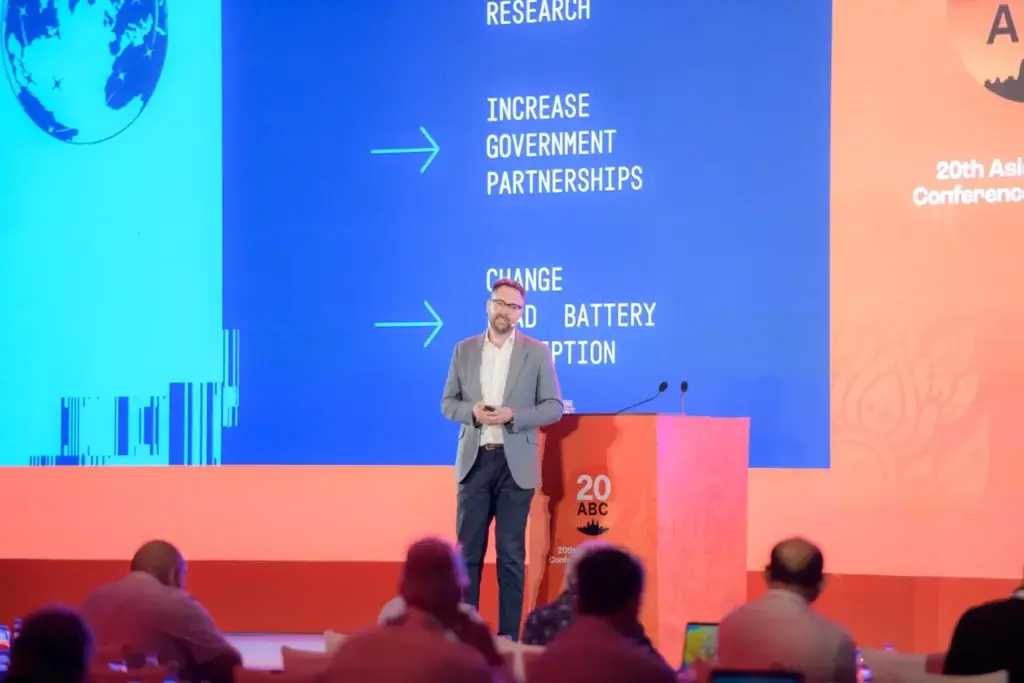
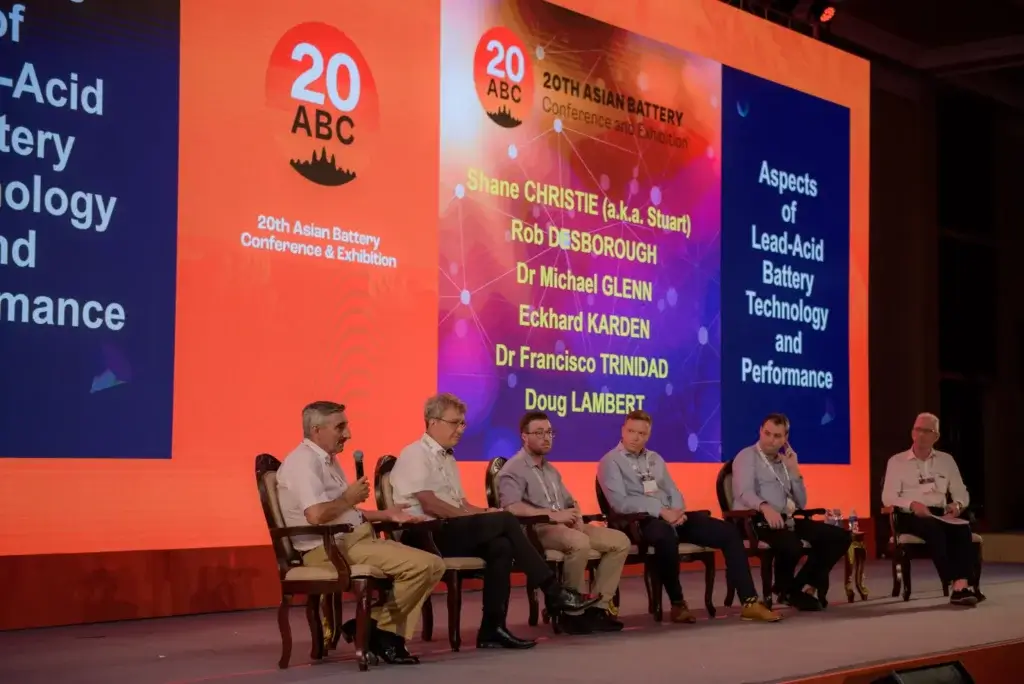
The 20th Asian Battery Conference provided a chance to join several technical sessions providing valuable insights from industry leaders, market analysts and technical experts about the lead battery industry. Several speakers including CBI member companies presented innovations and advancements, such as new active material formulations and improvements in the manufacturing process, for several applications of lead batteries.
Dr. Begüm Bozkaya, CBI’s Technical Manager, shared that there are definitely future opportunities for lead battery technology in Asia and other continents of the world via the implementation of new developments to deliver cost-efficient, safe, and sustainable battery solutions.
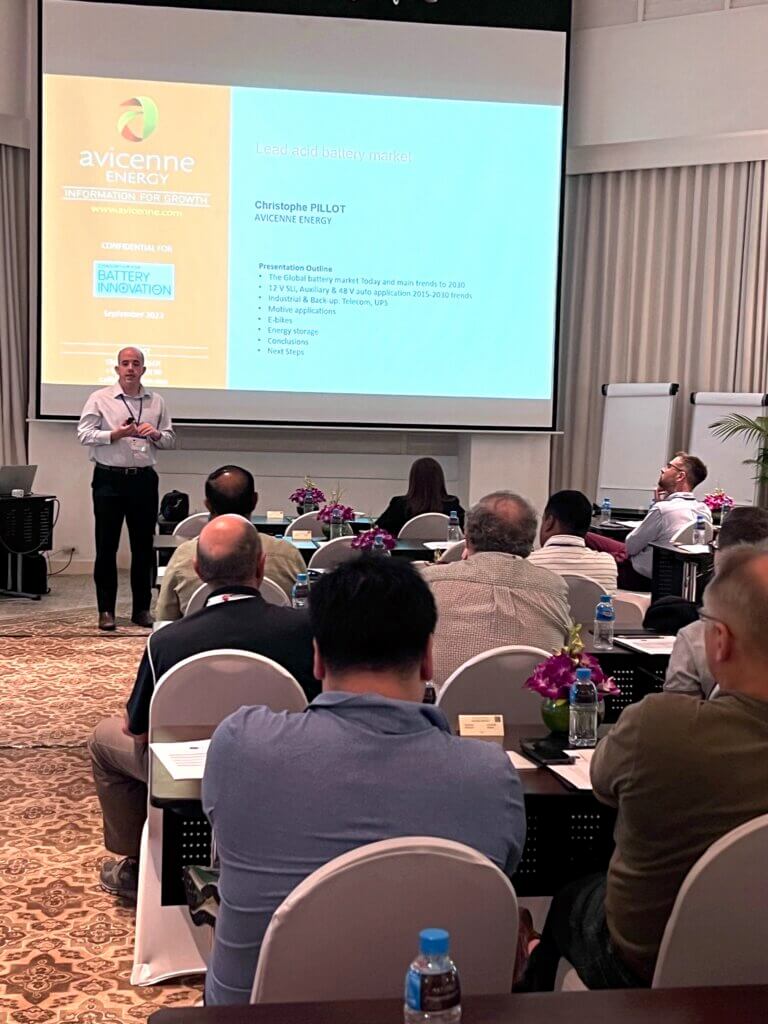
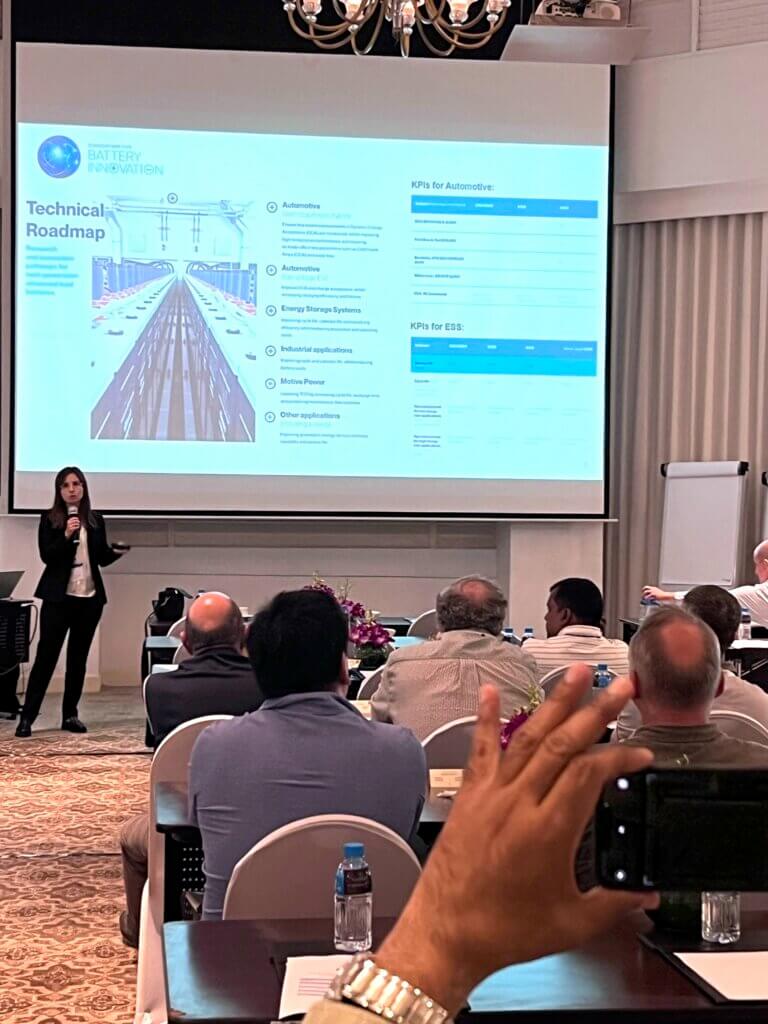
8th International Secondary Lead & Battery Recycling Conference covered several aspects of lead recycling industry in Asia and Africa. Bozkaya shared that many of the speakers addressed the current issues related to environmental challenges, financial, and social risks in the secondary lead industry. It was beneficial for attendees as some of the ILA & CBI members also illustrated their new techniques and developments in recycling of lead batteries.
Recycle 100 illustrated the ins and outs of running battery recycling centers - the heart of lead battery sustainability. Raiford was intrigued by ongoing improvements at Asian recycling operations, especially in increasing recycling efficiency - and how these improvements were presented to representatives from dozens of countries.
The city of Siem Reap, Cambodia was an amazing host and we enjoyed seeing all the beautiful areas in that region. The 20ABC was a successful event from all angles – including the achievement from the event’s charity initiative. The "ONE Minute Giveback", exceeded organizer’s and sponsor Sorfin Yoshimura’s expectations, by raising over $22,000.00 USD to help fund a bed in the Oncology Department of Angkor Hospital for Children.
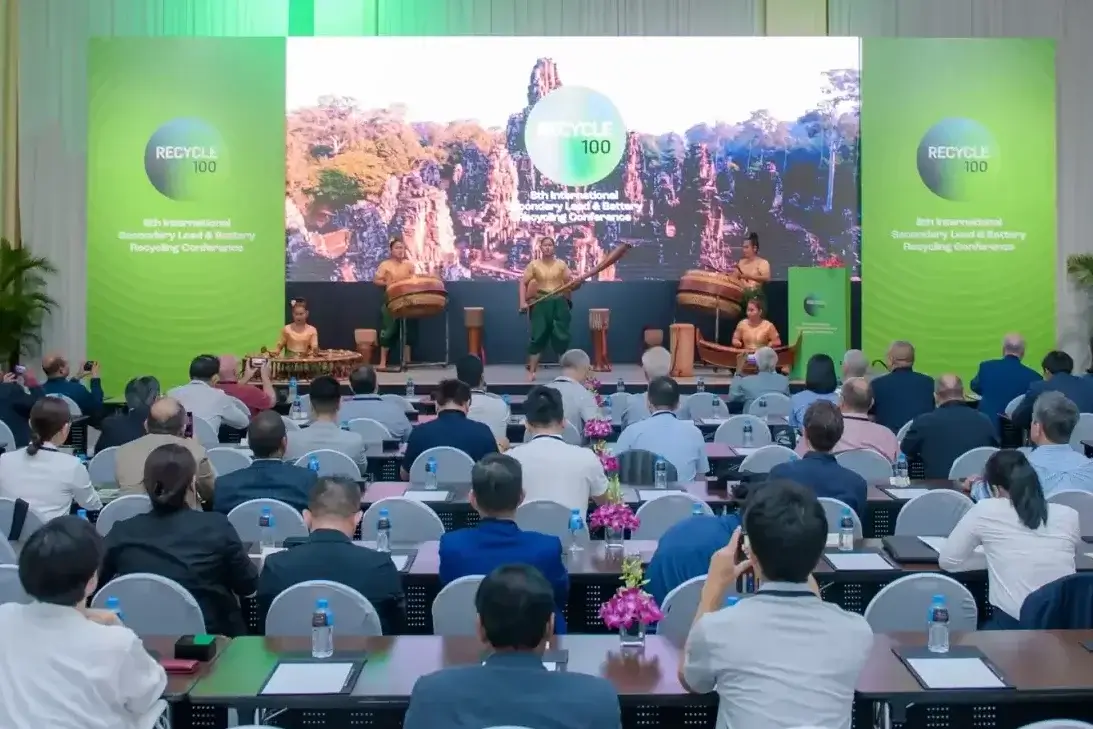

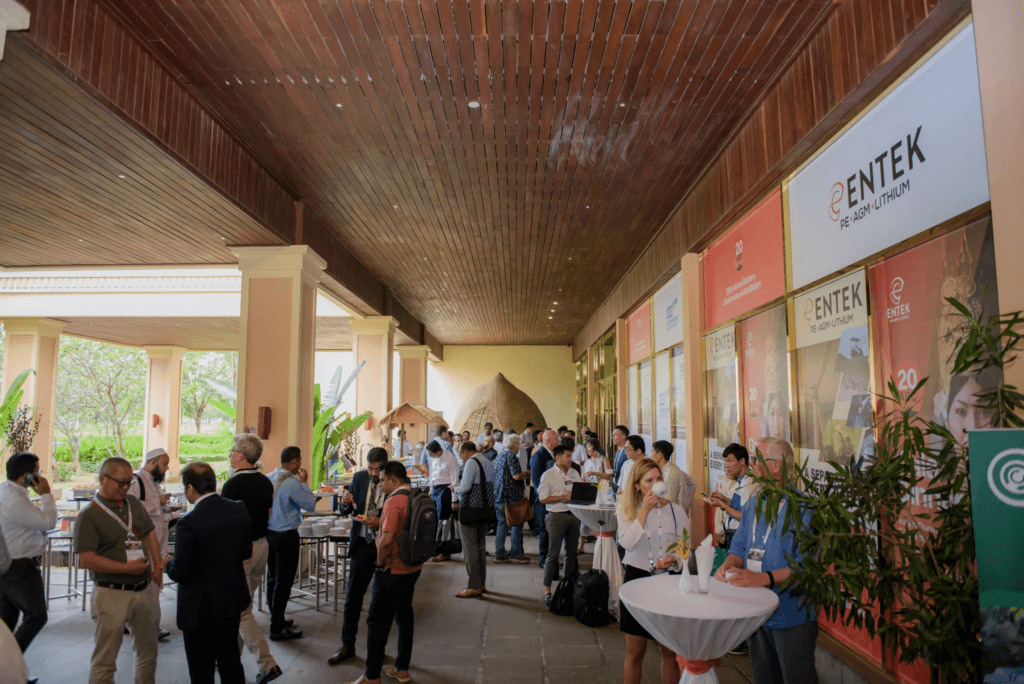
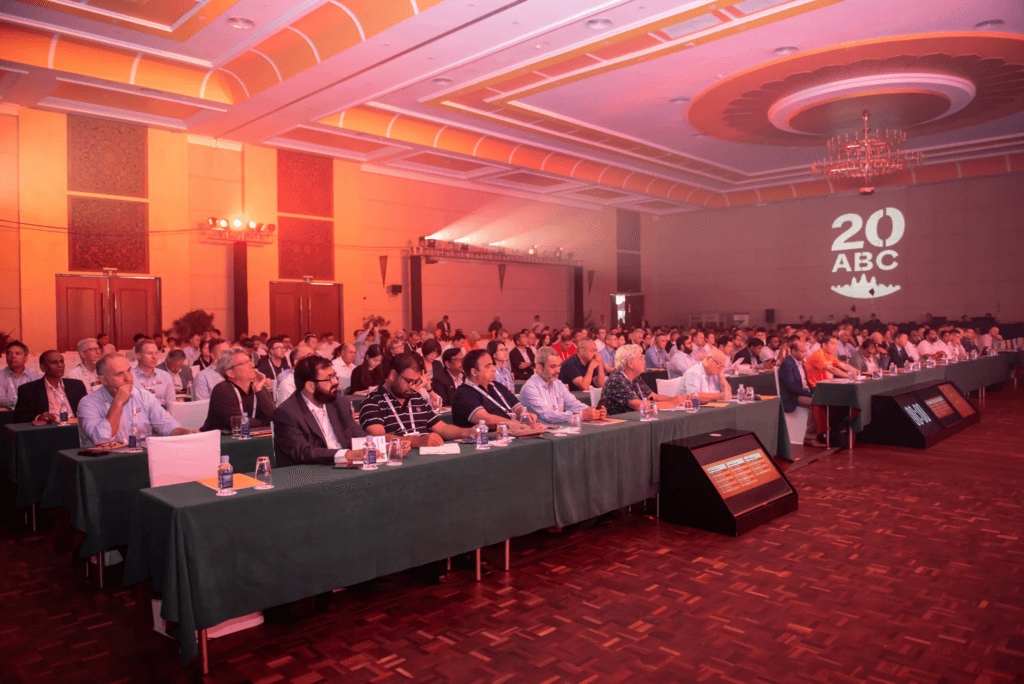
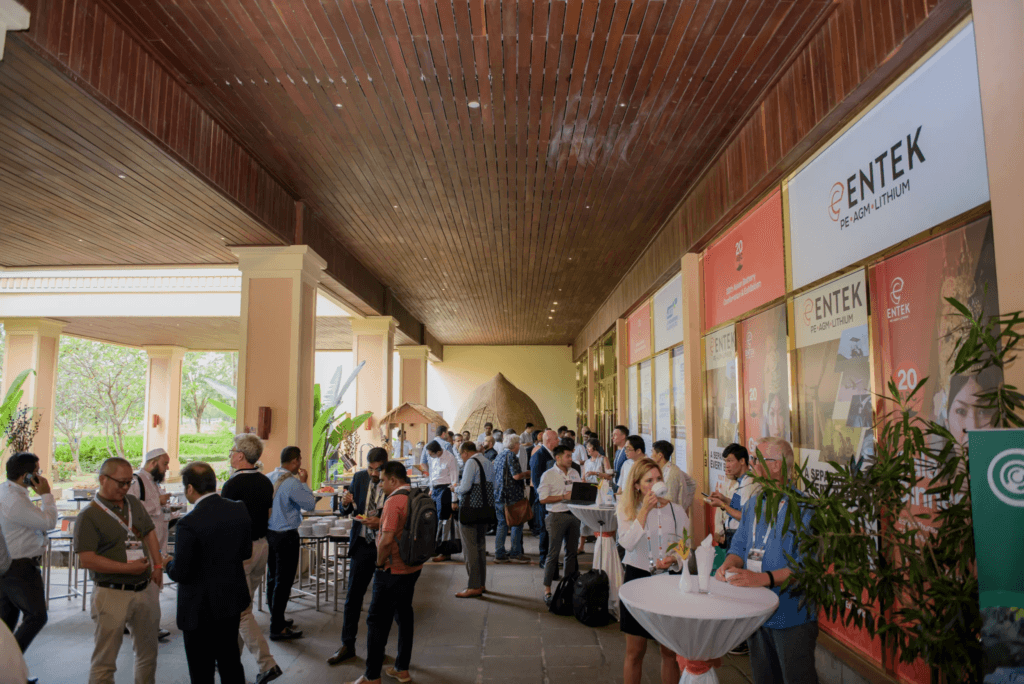
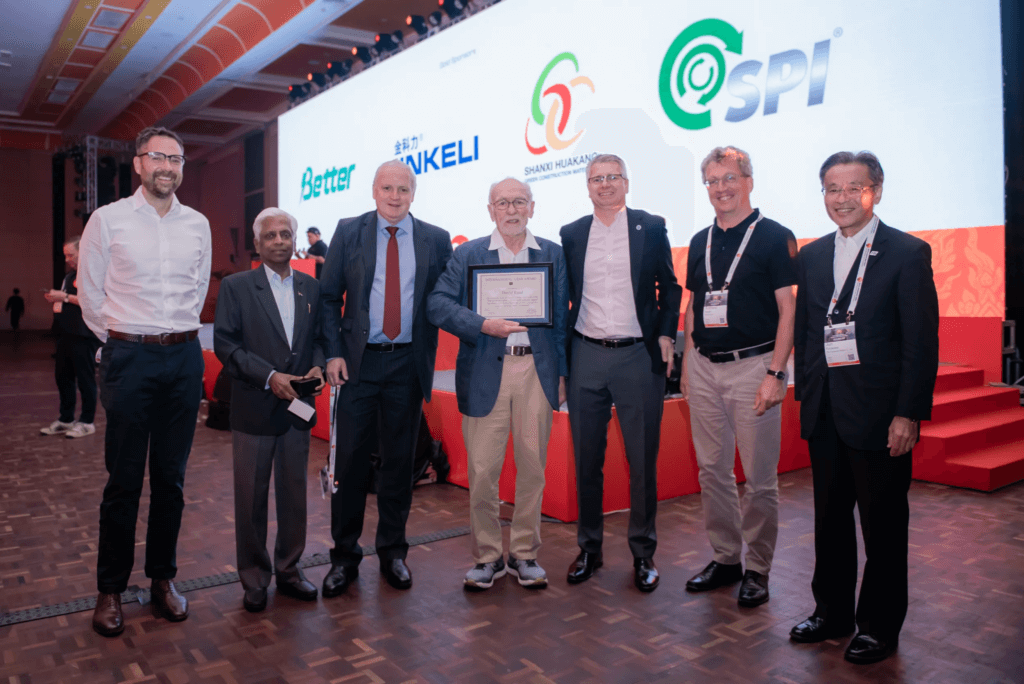
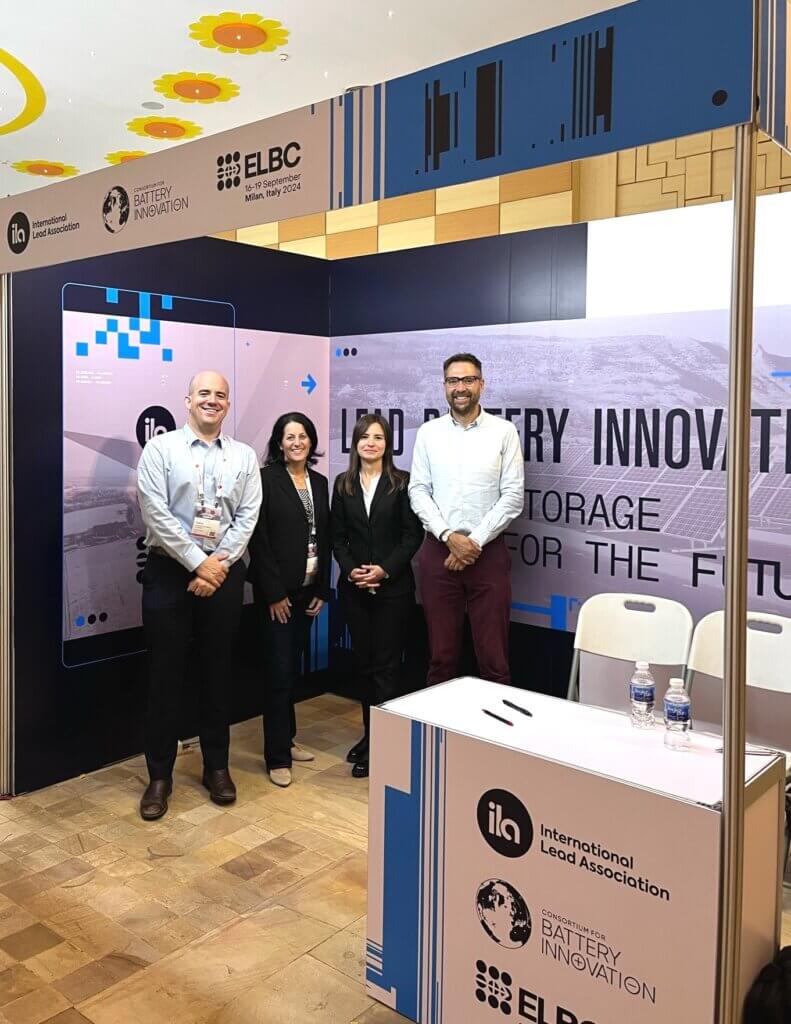
We look forward to next year’s events and continuing the technical conversations around lead batteries.
The Department of Energy (DOE) held its Energy Storage Grand Challenge Summit (ESGC) online and in Atlanta, GA on July 25-27, 2023.

Dr. Alyssa McQuilling, CBI’s U.S. Research and Innovation Manager, shared her thoughts and key takeaways from the event.
McQuilling noted that this is an unprecedented time for the development of energy storage with historic investments being made by the federal government to aid in commercialization.
As the DOE and other agencies are taking an “all of the above" approach to meeting the demands of a modern grid; there’s room for all the technologies to meet customers’ needs for a reliable grid (while also maintaining affordability).
At CBI, we encourage participation from all technologies to meet the growing global energy storage demand. CBI organized a response from the U.S. industry, and DOE ESGC efforts used the feedback from CBI members in a DOE Lead Battery Lift-off Report.
In this report, an in-depth analysis of lead battery innovation pathways was conducted, resulting in portfolios of lead battery improvements capable of helping the DOE reach the 0.05$/kWh/energy throughput goal outlined in the ESGC. These improvements include advanced manufacturing, improving cycle life, advanced control algorithms, standardization of devices and protocols, and demonstration projects to understand the impact of scaling on cost.
At the same time, we recognize how well-suited lead batteries are because they are a cost-effective, safe, and reliable solution. DOE recognizes lead batteries for this value as part of the energy storage solution as they currently represent much of the market.
Another takeaway is the ongoing emphasis on U.S. manufacturing, jobs, and ensuring that historically underserved communities also benefit through adopting energy storage technologies.
As a result, it will become increasingly important to make new connections that can accelerate growth in the industry because (again) the speed at which things are developing is unprecedented. These connections are critical and include collaboration and working across industries.
In the last session of the summit, the discussion focused on ROVI, or Rapid Operational Validation Initiative, (part of a collaborative effort from 6 national labs) to figure out how to model system performance/degradation/failure for different battery technologies by combining approximately one year of system data with machine learning/AI modeling approaches to figure out how the system will perform over a 15 to 20 year lifetime.
CBI is answering the many DOE opportunities by utilizing the breadth and expertise of our membership and bringing in key institutions and systems providers. These collaborative teams are poised to deliver a high-performing, sustainable, domestic solution to meet the many goals of the ESGC.
Below are two Energy Storage Innovation reports that were recently released:
A solar and lead battery-powered tractor, that is being developed as a farming solution for Africa, was named a semifinalist for the Milken–Motsepe Prize in Green Energy. The competition rewards projects who expand access to reliable, affordable, and sustainable electricity in Africa.
AfTrak or Africa Tractor, is a prototype program funded by Innovate UK as part of its Energy Catalyst Round 9. The program was one of 20 teams selected to advance to the Semifinalist Round for a competition by the Milken Institute and the Motsepe Foundation. Semifinalists receive $20,000 for the continued development and testing of their designs, as well as complimentary access to a Stanford Online course to help build their businesses.
AfTrak was selected from over 160 entrants around the world, in over 36 countries.
This potentially revolutionary tractor design, featuring lead batteries, is an African farming project created in collaboration between the Consortium for Battery Innovation (CBI), UK- & Malawi-based charity Tiyeni, and Loughborough University.
“We are delighted to be selected as a semifinalist in this prestigious competition—a reflection of the inspiration and technical capabilities of the Loughborough and Tiyeni teams. It’s also a great indicator of CBI’s ambitions.” said Carl Telford, Senior R&I Manager at CBI.
Across large areas of Malawi, under the few inches of topsoil, there is a heavily compacted layer of rock-hard earth through which plants cannot penetrate. Tiyeni has created an innovative agricultural method called Deep Bed Farming (DBF). The tractor, being developed at Loughborough University, will be a low-cost, hand-operated, solution for farming in the difficult soil.

The proposed AfTrak project is a micro electric tractor capable of mechanizing land preparation in line with Tiyeni’s Deep Bed Farming to prepare soil to a depth of 400mm.
For this program, AfTrak aims to provide an affordable green energy solution in sub-Saharan Africa, utilize a solar array and lead battery system to power micro electric tractors for Deep Bed Farming, and create a self-sustaining model for decentralized energy access.
An independent panel of expert judges determined the 20 teams receiving funding. Moving forward in the competition involves semifinalist teams demonstrating the effectiveness of their ideas in field tests.
They will be evaluated for their ability to:
After the Semifinalist Round, judges will select five finalist teams to conduct another round of field tests in Africa. Then in May 2024, the judges will award a $1 million Grand Prize. A Runner-Up Prize of $250,000 will also be awarded.
The Milken Institute is a nonprofit, nonpartisan think tank focused on accelerating measurable progress. They bring together the best ideas and innovative resourcing to develop blueprints for tackling critical global issues.
The Milken–Motsepe Innovation Prize program is a series of multiyear, multimillion-dollar innovation competitions for technological solutions that accelerate progress toward the UN Sustainable Development Goals (SDGs).
One of the two innovation competitions in the program, the Milken–Motsepe Prize in Green Energy, aims to expand access to reliable, affordable, and sustainable electricity in Africa as an essential factor in achieving long-term economic growth and shared prosperity. The competition advances progress toward SDG 7 (ensuring access to affordable, reliable, sustainable, and modern energy for all).
The semi-finalists were announced on June 6, 2023.
More information:
NOTE: AfTrak is the second bid application to be awarded to CBI in the past year after LoCEL-H2, a sustainable microgrid project using lead batteries and a novel, lead-battery-enabled funded by the European Commission under the Horizon Europe program.
CBI is working jointly with Electric Applications Incorporated and C&D Technologies and Trojan Battery Company on a project to demonstrate the improved fast charging capability and increased total energy throughput of newly developed batteries.
“We’re looking to charge batteries faster for use in motive power applications and how it impacts AGM battery life,” said Shawn Peng, Senior Director of Energy Storage Research for C&D Technologies and Trojan Battery Company.
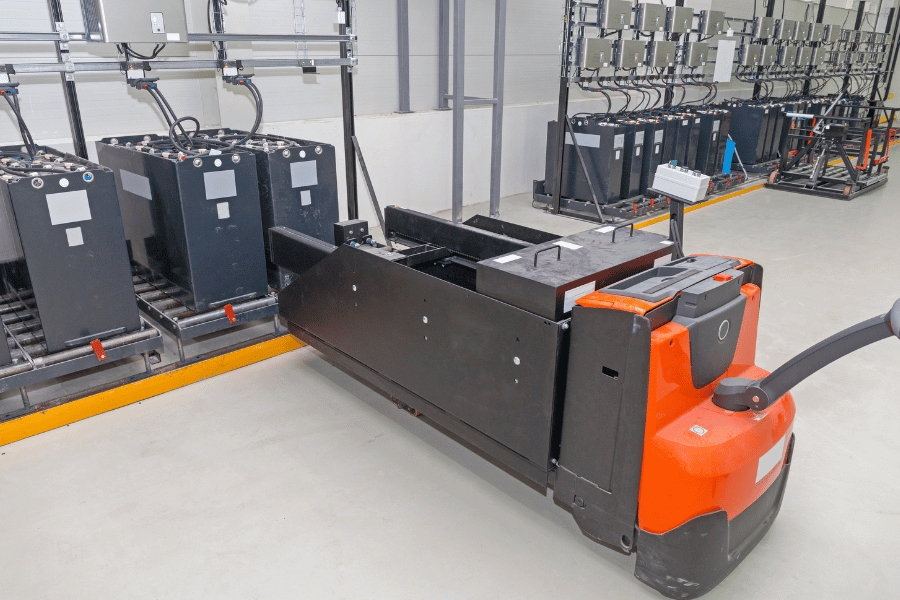
Peng explained that they are trying to determine the best approach and set of procedures for fast charge of a forklift – whether for a one-hour lunch break or overnight. This will help several companies more effectively utilize their motive and mobile fleets.
“We want to prove the best strategy for opportunity charging at 24/7 facilities, starting with a study on two different designs for a 2V battery to collect data and measure the KPIs.”
Specifically, the R&D department at C&D Technologies led by Peng, is initiating a 2V cell study to investigate and determine the proper charging current and voltage for a fast-charging protocol. The protocol will optimize the charging efficiency and reduce charging time through the life of batteries.
Then a third-party testing lab, Electric Applications Incorporated, will perform electrical testing of 8V batteries 48V packs using the optimized protocol. The 48V pack testing will be representative of what is used in motive power applications, like forklift traction batteries.
Peng added, “We want to see how far we can go with the technology to benefit the life and cost of lead acid batteries.”

Our members are vital for CBI’s ecosystem as they help us develop messages, interventions, roadmap, and our own call for projects. This helps CBI conduct pre-competitive research that benefits all CBI members, the battery industry in general and the wider research community.
As a large battery maker, Clarios are an invaluable member. Additionally, Clarios were instrumental in setting up and supporting the work of CBI’s Research and Innovation Manager, Dr Carl Telford, in developing public funding opportunities in Europe and deliver exciting, game-changing projects.
CBI team visited Clarios HQ in Hanover, Germany, to strengthen this collaboration and to learn more about their current R&D work.
« We have developed the Start-Stop technology in AGM to become the benchmark technology for premium cars with micro-hybrid functionalit. Innovation in process technology like the Clarios Power frame technology has been leading the way and is presently the standard in the industry. For the future, we see a lot of life left in Lead technology. We see further innovation potential in charge acceptance and cycle life to further improve the technology » (Dr Christian Rosenkranz - Vice President Industry and Governmental Relations EMEA at Clarios & Chairman at CBI)
Watch the first video from CBI's visit to Clarios:
The CBI team visited Castanheira do Ribatejo, in Portugal, to meet with Exide Technologies and to find out more about its facilities.
Exide operates two state-of-the-art solar installations at its battery production (in Castanheira do Ribatejo) and battery recycling facilities (in Azambuja), using lead batteries (see our case study here).
José Barreiros (Director Product Development Industrial EMEA at Exide) explained how it works in detail:
« We have a combined capacity of 4.5 MWp, with overall 11.250 solar panels installed. This is enough energy to supply more than 1.500 households. With these solar parks, we have reduced the carbon emission by more than 20% across both sites.
In our production plant, the PV installation is combined with our own battery energy storage system (BESS). It contains 70 inverters and 290 Sonnenschein Solar battery cells, with an available stored energy of around 500kWh. The battery storage system is part of a ‘Green Social Building’. It operates as an island for the factory workers, where the solar panels provide energy during the day and the batteries provide power at night ».
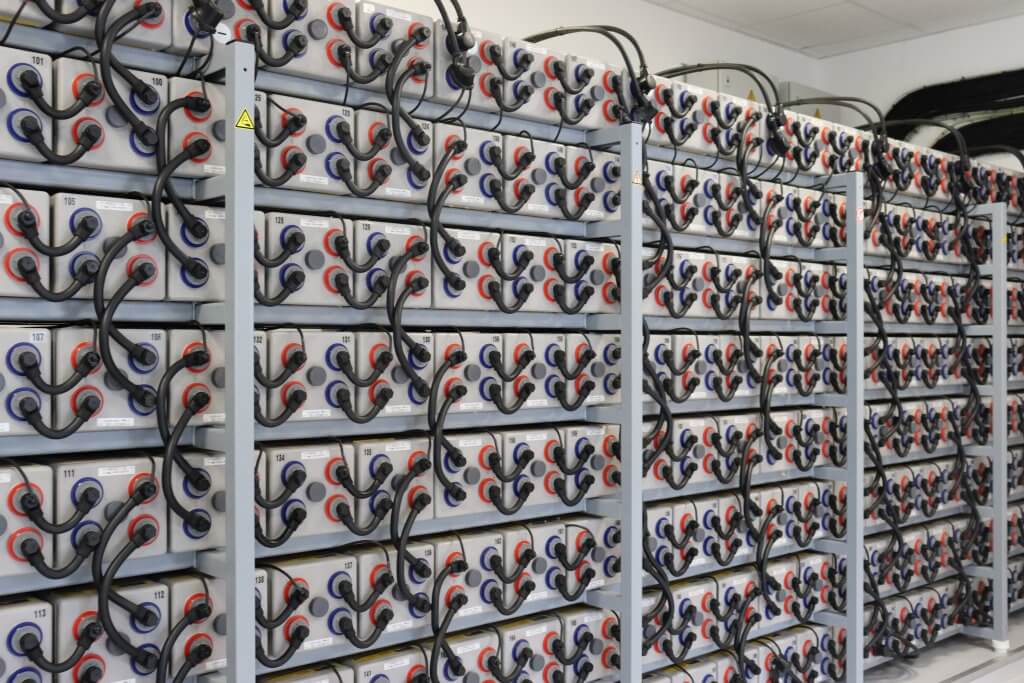
The type of lead batteries used in this Battey Energy Storage System (BESS) are Exide’s very own Sonnenschein Solar gel batteries. This battery range « has been used in complex, large-scale network power applications across the world for many decades », José continued:
« With their proven reliability, maintenance-free and first-class safety features, gel batteries offer a long service life and protection against deep discharge. Also, since lead batteries are fully recyclable at the end-of-life, our Sonnenschein Solar range provides added sustainability for renewable energy storage applications ».
For CBI, energy storage applications utilising battery technology is an increasingly important market-key to help governments around the world meet future electrification and decarbonisation targets and Exide’s Product Development Director agrees:
« As a global player of battery and energy systems, Exide Technologies is in prime position to inspire today’s and tomorrow’s generations with smart energy storage solutions, as we recognize the need to both preserve and energize the world. Exide Technologies offers smart energy storage solutions to support the transition from fossil energy to renewable energy sources. We focus on storage systems and solutions for greenhouse gas reduction and the optimization of TCO in energy-intensive industries.
Our energy storage solutions will enable businesses to become ‘greener’, more productive and in control of their energy usage and costs ».
Another benefit of this project is its unique and innovative Battery Management System (BMS) for lead batteries:
«Our installation is utilizing the battery management system to control the voltage of each cell and the temperature on each string, via four probes, assuring a tight control of the depth of discharge and charge on each string.
Taking into consideration that the battery operates on one cycle per day, this will allow deeper control of the state of health of the cells and act as soon as needed. It also predicts the available energy of the system depending on the power», concluded José.
This installation is one of many worldwide energy storage systems using lead batteries. If you’re interested in more projects like this one, please explore our Interactive Map.
NEWS RELEASE
The U.S. Army has chosen advanced lead battery energy storage systems to enhance its operational effectiveness in disaster zones and in combat.
A project led by Paragon Solutions, Inc., and the Consortium for Battery Innovation (CBI) is providing a new set of systems that can provide power for critical military operations anywhere in the world.
Paragon, a woman-owned engineering firm, and a member of the Consortium for Energy, Environment, and Demilitarization (CEED), partnered with CBI, a global lead battery research hub, to develop the winning proposal in response to a request issued to CEED members by the Consortium Management Group (CMG). The effort is sponsored by the U.S. Government under an Other Transaction Agreement between CMG and the U.S. Army Corps of Engineers.*
Paragon and CBI will develop transportable, robust, lead battery energy storage systems that can be integrated into tactical microgrids and demonstrated at the Contingency Basing Integration Training Evaluation Center (CBITEC) at Fort Leonard Wood, Missouri. The CBITEC site is managed by the U.S Army Engineer Research and Development Center, Construction Engineering Research Laboratory (ERDC-CERL).
The eighteen-month $3.5 million program also seeks to demonstrate how U.S. Army units can use lead batteries sourced from the Department of Defense supply system and from locally available sources such as vehicles, while increasing the lifecycle for certain battery types to meet battlefield energy demands.
Retired U.S. Army Captain and government technical lead for this project, Tom Decker, said: “This is an important project to the Army because in any type of contingency environment, while in combat situations or following a natural disaster, it all falls back on the Army Corps of Engineers to provide power to continue operations. And this is where lead batteries come in.”
“By being able to use lead batteries that are available on the ground and make an energy resource out of them, we have the ability to continue whatever mission we’re on, be it disaster relief or engaging in combat.”
“This just adds to our capabilities. The durability of lead batteries has been proven over many decades so we know what we’re getting when we use the technology. But then we get the added value of the advanced lead battery systems which the industry supplies, and this is the technology that makes the systems viable.”
“Lead batteries give us the ability to deploy energy storage systems anywhere in the world, enhancing our resiliency. And one of the current US administration’s priorities is reducing carbon footprint, so by decreasing our use of fuel and adopting more innovative energy storage systems, we’re reducing our carbon footprint too.”
Implementation of the systems will be done to NATO specifications, and if successful, would allow for deployment in many different countries. This solution aims to overcome issues with host nation power grids by designing an energy storage system that accepts host nation power, stores it, and then provides it in a form that is compatible with U.S. Army equipment.
The resiliency, safety and reliability of power supplies are priorities for military operations. Lead batteries have been chosen for the project as the technology of choice because of their inherent safety and robustness in extreme weather as well as their availability in the field. Using lead batteries would provide Army Commanders with local sources of batteries in vehicles and telecommunications towers around the world.
The Paragon/CBI team will develop energy storage systems providing between 125kWh to 250kWh of critical energy using three different lead battery technologies provided by US-based battery manufacturers, Advanced Battery Concepts (ABC), East Penn Manufacturing and EnerSys. These operational workhorses will be transportable, easy to operate by military personnel, and can be integrated into tactical microgrids to provide power for critical loads.
The project team will also develop a ‘plug-and-play’ 30 kWh energy storage system, which will give soldiers the ability to plug into an energy storage source made up of used lead batteries found in locally available sources, such as vehicles. Marcus Ferguson, ERDC-CERL project officer, and manager of the CBITEC site said: “After Hurricane Maria in Puerto Rico in 2017, approximately 130,000 damaged vehicles were lying unused with an untapped energy source: lead batteries. If this energy could be harvested, future disaster relief and other military operations, wherever they are in the world, could be provided with reliable, low-cost energy”.
The prototype lead battery energy storage systems will be constructed and tested in various simulated duty cycles to recreate typical field conditions for military operations. The aim is to develop systems that could be rolled out across the U.S. Army. Furthermore, when the lead battery ESS prototypes are connected to Army tactical quiet generators (TQGs) the systems will provide low heat signature and quiet energy assets - essential requirements for U.S. Army activities in the field.
Dr. Matt Raiford, CBI project manager, added: “Lead batteries have been chosen for this important project based on their resilience, consistent performance at all temperatures and their accessibility. This will set a benchmark for smaller microgrids providing essential power and security in a range of settings from remote rural areas to larger military installations.”
Raiford continued: “CBI is committed to developing advanced lead batteries for energy storage applications and the recognition that this mainstay technology has been chosen to support U.S. Army operations is testament to the inherent safety, reliability and sustainability of the technology.”
*Effort sponsored by the U.S. Government under Other Transaction number W9132T209D001 between the Consortium Management Group, Inc., and the Government. The U.S. Government is authorized to reproduce and distribute reprints for Governmental purposes notwithstanding any copyright notation thereon.
The views and conclusions contained herein are those of the authors and should not be interpreted as necessarily representing the official policies or endorsements, either expressed or implied, of the U.S. Government.
END
Notes to editors:
1: For more information please contact Hywel Jarman in the CBI media office on +44 7718 483887. Visit www.batteryinnovation.org.
They are the future of the lead battery industry: highly-educated, motivated and brimming with new ideas and ambition. CBI spoke to three talented scientists, new to the lead battery industry, to find out more about their perceptions of the workplace and to hear their suggestions about how the industry can continue to attract the brightest and the best.
Max Parker, a PhD Student at Warwick University (United Kingdom); Miguel Rodríguez Gómez, PhD Student at INMA (Spain) and Grace Rocha, a Scientist at ITEMM (Brazil). From industry’s first impressions, learning new areas for innovation and crucial for our future, to the industry’s urgent effort to attract more young talents, they are the voices of a new generation inside the lead battery industry and here’s how they feel about it.

CBI : Tell us a bit about when you first joined this industry. What were your expectations ?
Max : « Batteries are an exciting area with a lot of areas to look at and lots of different things to analyse. Before joining the industry I didn’t really know what made one battery better than the next, why this one can charge faster than the other or why this one lasts longer than the other. Lead batteries are interesting because they have been around for such a long time, but there is still so much more to look at, and still so much more to learn. »
Grace : « To be really honest I didn’t think very much about the whole Lead Battery industry. I just wanted to be part of a great industry with a great social impact, which everybody near around knows Moura does to the city and to the state. Now, I am truly surprised with how much I enjoy working on the field. I see that there is a excitingopportunity for progress learning and development in every area of lead battery technology. »
Miguel : « I had just finished my masters degree and I was looking for research into something related to the energy or climate crisis. Energy storage is essential to be able to cover the off-peak hours of renewable production, and to move away from fossil fuels (which also have rapidly diminishing reserves). So, I started to look for research lines related to batteries. The truth is that I knew almost nothing about lead batteries, I thought there were only in cars and little else, but when I learned a little more and discovered that they can be used for many things and above all that recycling is very high, I decided to go for it.”

CBI : And now that you’ve been working for the industry, what’s your current perception ?
Max : « I think that there are lots of challenges ahead for the world of lead batteries. I would like to see more innovation to meeting these challenges, especially in the energy storage sector, which will be a big part of the future of lead batteries. Innovation is constant, and constantly necessary, because the use cases of lead batteries are changing. We need to be providing the new and innovative batteries of not just today but also the future. »
Miguel : « There is still much to discover and improve, and I think that since the materials of the batteries are cheap and abundant (but also safe and resistant), it will be very important in the years to come. On the other hand I think that production is too focused on the automotive industry. There is less and less demand for cars worldwide and energy is becoming more and more expensive, so I am convinced that the future is energy storage and back up systems. »
CBI : What can you learn from working with professionals who have been in the industry for a long time? What do you learn from each other in your projects ?
Max : « Professionals with a lot of experience have a wealth of knowledge and, but it is up to them to pass that on. I started from zero knowledge and having an experienced professional to provide guidance would have been of great help to ensure that I wasn’t misunderstanding things. Since being involved with the CBI, it has enabled contact with battery experts within companies and other universities. Some of them can share knowledge that is not as well known or written about in technical literature. And this leads to better experiments, better understanding and better development. »
Grace : « One of my favorite things about my job is the opportunity to network with everybody in the global lead battery chain. I’ve noticed that there is so much contribution on the field. For example, every time I have a call with a supplier, a partner, a specialist, I learn something new. And I feel they are always willing to help, they are so welcoming to answer my questions (and I do have lots of questions !). The Lead battery is not a technology that you learn through on college here in Brazil. So everything I know so far, I’ve learned from their experience. I’m really glad to see how some of the ideas I’ve given actually worked and contributed with the development of the projects. »

CBI : What things would you like to happen in the industry to attract more talent ?
Miguel : « There are two main things to attract younger professionals. The first is to raise awareness of the lead battery industry, communicating its importance globally and showing that it is possible to have a fruitful career in it. The second is to communicate that it is a technology that can help with very important problems that especially (but not only) the younger generations are going to suffer, such as the climate crisis, the energy crisis and the resource crisis. For me personally, it is essential that 99% of the lead in batteries is recycled. I would not like to work with a polluting technology that ends up accumulating in landfills. I also believe that research lines focused on renewable energy storage and batteries for trains (which is the most efficient and less polluting transport, both for people and goods), should be encouraged. »
Max : « From my perspective in the world of academia, I would like to see more PhD funding, more internships, sponsorships and more university partnerships. Early career development and career paths can encourage people to join. Another option would be a summer job/internship/work experience in a battery company. Getting young people into the world of batteries requires investment in them, and guidance. With the right support and guidance a PhD student can produce some excellent research. But without the right funding they will go to do something else, or a PhD in another field. »
Grace : « I believe the answer is undergraduate students. Talking about the Brazil scenario, I would like to see the industry work more with universities. For example, investing in programs to develop new projects for undergraduate students. I think that would be a win/win situation : The students would have the opportunity to work on a real life problem and learn about the lead battery from experts ; and the company would have the opportunity to work with new researchers and a new university department. This is a great way for students to be more prepared before they join a lead battery company.
I think even quick programs like a “Battery Marathon”, something like a Hackathon, would make students curios about the area and starttheir development from college. Today, at ITEMM we are already making this approach. Recently we started the implementation of a research and innovation center in a technical college in the city, focused on developing young talent.»
CBI : Would you recommend the lead battery industry as a place to work for young scientists?
Miguel : « I recommend the lead battery industry to anyone interested in energy storage. It is a well-known technology but there is still a lot of room for improvement, and research is always interesting and fun. From my work I especially like the direct relationship with the industry, which is eager to generate more and more research projects. This year at ELBC, I have learned a lot and it has been a very rewarding experience to learn about the latest advances in research and also to see what the market trends are. »
Grace : « I do recommend. The more I work on the field the more I see there is still so much room for new ideas. It is a great time to be working in the battery field! Environmental care is one of the major concerns around the world, and batteries are key to this! One of the great things about the lead battery industry is that we are a safe technology, critical for energy storage, which helps reduce the global carbon footprint. Something people forget is that we are also an industry that has a true circular economy. »
Both Max and Miguel won this year’s CBI & EUROBAT Student Award, a great way to promote their work in the industry by bringing them to ELBC 2022 as speakers. In 2022, CBI also visited ITEMM in Brazil, where we had the chance to meet Grace and learn about her work at the Research and Development Department.
Interested about their work with CBI? Check out our blogs and videos:
This European research collaboration aims to optimise lead battery performance for micro-hybrids. Researchers from Fraunhofer ISC and Wroclaw University are investigating the effect of carbon surface chemistry on the battery performance, and the goal is to understand which kind of surface chemistry is beneficial for improved charging and discharging behaviour for lead batteries.
Research projects like this one are proving to be relevant for wider scientific topics, such as low-emission vehicles, electrification and decarbonisation, as well as for carbon additive research.
According to Expert Group Manager from Fraunhofer ISC, Jochen Settelein, to follow the energy transition, batteries play a central role and lead batteries are safe, highly recyclable, produced at a low cost and the entire value chain exists within single countries or regions. By undertaking research and innovation into the lead battery technology, researchers are finding their way to adapt this « well-established technology » to the needs and requirements of the current energy transition.
Through this specific project, CBI is bringing together leading European researchers, scientists, and institutions to work towards a common goal, achieving CBI’s Technical Roadmap goals for the automotive sector, such as improving DCA.
Watch full video about this project here:
A key goal of CBI’s Technical Roadmap to improve the DCA of lead batteries, a technical parameter highly relevant for the automotive industry which encompasses lower emission vehicles such as start-stop, micro-hybrids and electric vehicles.
The CBI-funded project "Best practice of cell testing for EFB regarding DCA and high-temperature durability" delivers a significant improvement of DCA while also delivering uncompromised water consumption and improved corrosion durability.
With project partners from across the European value chain – universities TU Berlin and Fraunhofer ISC, car company Ford and battery manufacturer Moll in– this project encompasses the diverse players involved in Europe’s innovative lead battery industry.
As the automotive industry continues to move towards decarbonisation and electrification, new functions are required to increase safety and comfort. “These trends impose growing demands on the energy storage devices used within automobiles. In order to take advantage of these opportunities and defend against competition from other technologies, the lead battery must continue to adapt and improve”, explains Sophia Bauknecht from TU Berlin.
This project in particular is essential for the growing start-stop and micro-hybrid market as “Dynamic Charge Acceptance (DCA) and water loss are critical factors for the efficiency and lifetime of start-stop batteries, and they need to be improved to stay competitive with other battery technologies”, says Prof. Dr Julia Kowal from TU Berlin.
“Changes in the material synthesis and preparation are needed for cost-efficient and faster material developments. Especially if it works to measure the DCA from a simple measurement of a reduced size cell, improvement of DCA can become much faster because only small cells are needed for material screening and then only the promising materials need to be scaled up to complete batteries”, she continued.
Lead batteries are a vital part of automotive applications, including SLI, start-stop and micro-hybrid applications. As the industry shifts towards electrification, this technology will continue to evolve and adapt in order to provide better safety and security features through secondary low-voltage EV batteries, EFB and AGM batteries.
Pre-competitive research projects underway through CBI’s Technical Program, like this one, not only help CBI to develop better practices for the industry, but also strengthen the collaborative work between automotive manufacturers and battery application specialists to continue the innovation push driven by CBI.
Watch Part II video of CBI's visit to TU Berlin
Interested in related topics ?
CBI Research and Innovation Manager Position
Location Durham, North Carolina preferred
Contract Initial contract 18 months
Hours 35 (full time)
Job Summary
The Consortium for Battery Innovation, a rapidly growing global battery research consortium, is seeking candidates for an 18-month position as CBI Research and Innovation to be based at its North American office in Durham, North Carolina.
The successful candidate will have excellent scientific knowledge, ideally including battery technologies, in addition to strong communications and interpersonal skills. The candidate is expected to efficiently manage a diverse portfolio of technical activities working independently.
Required Qualifications
Preferred Qualifications
Job Responsibilities
This role will involve regular North American, European and Asian travel.
Compensation
The salary and benefits package will be commensurate with education and experience.
About CBI
The Consortium for Battery Innovation is a global innovation hub which supports cutting-edge pre-competitive research and promotion of innovation in lead battery technology. The consortium includes more than 100 member companies and organizations worldwide, consisting of lead producers, battery manufacturers, battery users, materials suppliers and research institutions.
The candidate would be joining a vibrant and dedicated team, with offices in Brussels, North Carolina, and London. More information can be found here.
Application
Interested candidates should submit a CV and cover letter to info@batteryinnovation.org by October 16, 2022.
We are committed to equal opportunities and creating an inclusive environment for all our employees. We welcome applicants regardless of ethnic origin, national origin, gender, race, color, religious beliefs, disability, sexual orientation or age.
The Consortium for Battery Innovation, a rapidly growing global battery research consortium is looking to appoint an experienced communication manager to support our corporate communications programme, handling the full range of disciplines including external, digital and member/internal communications.
The role will report to the CBI Director, and is an opportunity to help deliver and influence a wide range of innovative communications projects and campaigns in Europe, the US, Asia and Africa. The post will be based from the CBI office in Durham, North Carolina.
Job Title Communications Manager
Location Durham, North Carolina preferred
Contract Initial contract 18 months
Hours 35 (full time)
Required Qualifications
Job Responsibilities
This role will involve regular North American travel and occasional European and Asian travel (15-25% time)
Compensation
The salary and benefits package will be commensurate with education and experience.
About CBI
The Consortium for Battery Innovation is a global innovation hub which supports cutting-edge pre-competitive research and promotion of innovation in lead battery technology. The consortium includes more than 100 member companies and organizations worldwide, consisting of lead producers, battery manufacturers, battery users, materials suppliers and research institutions.
The candidate would be joining a vibrant and dedicated team, with offices in North Carolina, and London. More information can be found here.
Application
Interested candidates should submit a CV and cover letter to info@batteryinnovation.org by October 21, 2022.
We are committed to equal opportunities and creating an inclusive environment for all our employees. We welcome applicants regardless of ethnic origin, national origin, gender, race, color, religious beliefs, disability, sexual orientation or age.
The next North American CBI Technical Workshop will be held at the Durham Convention Center, Durham, North Carolina from 14-16 November 2022. The workshop will start at 2pm on the 14th November and finish at 1pm on the 16thNovember.
This workshop will cover:
Workshop only for CBI members. For more info about the event and CBI membership, please contact Anita Wright at anita.wright@batteryinnovation.org
CBI is co-organising an event with the India Lead Zinc Development Association (ILZDA), International Lead Association (ILA), International Lead Zinc Study Group (ILZSG), Indian Battery Manufacturers Association (IBMA) and the Recycling and Environment Industry Association of India (REIAI) to discuss the role of the lead industry in Energy Storage, E-mobility and Environment.
The International Conference on Lead & Lead Batteries will take place in New Delhi, India from 5-6 December 2022 and CBI’s Director, Dr Alistair Davidson, will talk about innovation for lead batteries and CBI's exciting new projects coming up involving energy storage systems.
This world class event is a great opportunity for stakeholders of the lead and lead battery industry to learn more about the latest technology developments and trends.
One of the highest priority goals set out in CBI’s Technical Roadmap is improving DCA –Dynamic Charge Acceptance for automotive lead batteries.
It’s a key area of work that CBI works with universities, research institutes, battery companies and car manufacturers around the world to tackle.
At TU Berlin, an ongoing research project has identified that on a battery level “single-pulse test for DCA and continuous overcharging for water consumption bear only weak correlation with results obtained under field conditions, particularly when most advanced (high DCA) battery technologies are addressed”, says Sophia Baucknecht, Graduate Research Scientist from TU Berlin.
As part of the research team made up of TU Berlin, Fraunhofer ISC, Ford and Moll, Sophia’s research aims for a better alignment and co-operation between car makers and battery application specialists.
With what aim? To establish best practice cell-testing for EFB regarding DCA and high-temperature durability.
These two metrics are vital for the enhanced performance of automotive lead batteries used across the global vehicle fleet, such as start-stop and micro-hybrids.
The research is increasing the efficiency of lead batteries by “finding out if lab-cell tests of DCA and water loss can be scaled up to a complete battery”, explains Prof. Dr Julia Kowal from TU Berlin.
If there’s higher efficiency and better charge acceptance, “less energy is lost during charging and braking and so the fuel consumption is reduced”, she continues. This is a critical step for automotive battery innovation towards decarbonisation and electrification for more fuel-efficient cars with a lower carbon footprint.
Watch the first video on CBI's visit to TU Berlin:
Interested in related topics?
The Global Lead Battery Innovation Conference and Expo (ELBC), co-organised for the first time by CBI, took place in Lyon, France (6-9 Sept).
As a warm-up to the main conference, CBI brought together lead battery industry experts from all over the world, to take part in:
On day one of ELBC, CBI’s Director (Dr Alistair Davison) set out a positive assessment of the opportunities for advanced lead batteries highlighting CBI’s roadmap, which charts a path to a new generation of batteries in a session dedicated to Markets and Trends.
And CBI technical experts, including Begüm Bozkaya, Technical Manager, outlined the CBI technical program with an insightful presentation focusing on improving energy storage systems and automotive batteries as key innovations in the industry.
To promote CBI’s Technical Roadmap and its work in driving innovation across the industry Dr Matthew Raiford, CBI’s Senior Technical Manager updated delegates. And in a major announcement, Dr Carl Telford impressed ELBC attendees with news of a 10 million Euro funding award for an innovative lead-battery powered microgrid project in Africa, brokered by CBI.
In his presentation entitled « Opportunities for Lead Batteries in Energy Storage Systems », Dr Telford spoke about the use of lead batteries for sustainable energy projects and presented for the first time this novel project funded by the European Commission that gathers lead batteries, renewables, and hydrogen.
As always at ELBC there were many networking opportunities, with delegates able to meet face to face for the first time in four years. The well-attended gala dinner took place at La Sucrière, and WGBI’s (Women in the Global Battery Industry) held its first meeting in Europe. This important initiative aims to bring more women to our industry and empower them through networking sessions, workshops, and mentoring opportunities.
CBI is very much looking forward to seeing all these fantastic attendees and delegates again at ELBC 2024 in Milan, Italy.
Watch the Event video:
The share of renewables for electricity generation by 2030 is expected to grow to 35%, and this global shift is relying on innovative technologies to harness this energy in clean, affordable and sustainable ways.
A big focus area for this shift is how to ensure that the clean energy transition fairly includes communities in parts of the world without reliable access to electricity or energy resources.
Responding to Europe’s Horizon call for funding proposals, a consortium of organizations spanning the energy, batteries, hydrogen academic and NGO sectors has joined together to develop a novel concept called LoCEL-H2.
Aiming to develop a sustainable, scalable, multi-vector energy solution to improve the lives of vulnerable communities, the project is based on renewables, battery storage and a novel hydrogen technology for cooking/fuel.
Low-cost, Circular, plug & play, off-grid Energy for remote Locations including Hydrogen, LoCEL-H2 is recognising the need for a fair energy transition across the globe and working to deploy pilots in two communities that have no access to reliable sources of energy.

This innovative concept includes battolyser hydrogen technology under development at Loughborough University, which will be used as cooking fuel for the communities where the modular off-grid energy solutions will be installed.
The future needs innovation. And it needs technologies to work together and complement each other to deliver innovative solutions for the clean energy transition. Bringing together different sectors, each with expertise in various technologies and energy solutions, LoCEL-H2 aims to ensure clean energy is paired with socioeconomic benefits for remote communities around the world.
See Press Release here.
Watch the first video about the project:
There are clear goals from the EU to decarbonize and decrease the reliance on fossil fuels. Understanding the fundamental contributors to lead battery failure at a molecular level will enable stronger cycling performance of lead batteries in all applications, such as microhybrid and energy storage applications. Batteries in these applications serve as the main tool to decarbonize the European utility grid and automotive fleet, the most important areas underpinning the EU Green Deal.
The main objective of this project is to analyze the different electrochemical processes and reactions that take place inside the battery electrodes during operation. To this end, CBI, INMA, and Exide Group are using, for the first time, in-operando neutron scattering techniques by placing real operating cells, built using the same components as in the factories, in a neutron instrument and collecting diffraction patterns and images from inside the cell, with both spatial and time resolutions, during the charge and discharge processes.
Also using neutrons because its penetration capacity in matter is much higher than that of other particles, as X-rays or electrons, used until now for battery analyses. In this way, it's possible to study real thick cells, about one centimeter in thickness, in real operating conditions.
This is an approach never used before in lead cells.
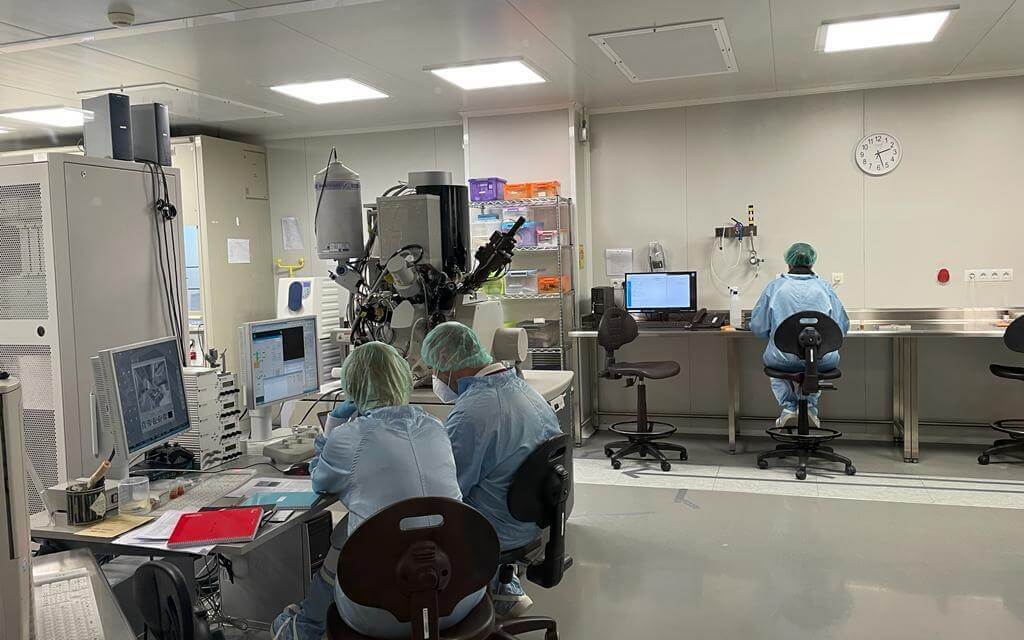
Learn more about this project through our project update video:
Every year since 1970 people all over the globe celebrate Earth Day to support the dialogue and actions taken towards the preservation of our planet, its environment, sustainability, and its future.
Today at CBI, we want to celebrate this day too by sharing some of the key ways in which the potential of our technology is being unlocked through research and innovation, to contribute to the goals of Earth Day.
Lead batteries are active in this space in two key ways: low-emission mobility and renewable energy storage.
One of our main research focuses at CBI is to expand the technology’s performance in the automotive industry, from start-stop technology to low voltage EV batteries.
We're working with leading research institutes, battery manufacturers, and car companies to drive forward this progress to improve dynamic charge acceptance (DCA). You can read more about these projects here.
Renewable energy storage also has a major role in the current energy transition across the globe, delivering clean, reliable power. Some of the recent examples we've added to our interactive map of energy storage projects, which showcases our members in all regions of the world providing advanced lead battery storage, are below:

This is just a snapshot of how the global lead battery industry is underpinning the clean energy transition in diverse sectors, from science and safari to manufacturing.
Innovation is key to sustainability. Technology progress is supported by fundamental scientific research into the chemistry, to help make better batteries, and CBI’s 2022 Request for Proposals is calling on industry, scientists, and researchers to join us on this innovation journey.
From energy storage systems using renewable energy to cutting-edge research developments, these are some of the highlights of our recognition of the importance of Earth Day, every day. As our mission to support the energy transition grows, CBI will continue to work with the global lead battery industry to ensure lead batteries are ready to meet future opportunities
Following this year’s International Women’s Day, we’ve interviewed some of the faces behind the communication strategies of our industry. People who work daily to demonstrate the effort of an industry towards climate goals, such as decarbonisation and electrification, while sharing messages of the industry’s work to achieve sustainable targets, science progress and innovation.
These are the professionals who are responsible for the communications of a long-standing industry, so essential in the digital world. They deal with a considerable amount of daily information and they’re able to transform the complex world of science to policymakers, business people and citizens in dynamic and understandable ways. And guess what? Many of them are women!
But why is it that the role of comms has become more important than ever? And what can these experts in the field tell us about the relevance of “sci-comms”?
According to Tammy Stankey, Director of Communications at The Doe Run Company, innovation in comunication is key in order to be modern and relevant, whilst for Fareha Lasker, Communications Manager at the International Lead Association, these are very exciting times to work for the lead and lead battery industry:
"The industry presents a dream messaging scenario — huge market demand combined with a key role for our technologies in the clean future of the planet means it’s a time of obvious and great opportunity. We know that the next 10 years will see unprecedented growth in demand for battery energy storage to support a clean energy future and that advanced lead batteries have a key role to play in applications which will enable rapid electrification of our economy and society".
The group agreed that it’s "essential" for investment in the industry’s comms departments, and as Niamh Owen-McLaughlin, Communications and Digital Manager at CBI, explained, it’s about telling a story of an experienced industry that has witnessed not only evolution but also "innovation, progress and research" and it’s also important to share the "importance of the technology" for the future :
"Without comms, a lot of our stakeholders would never hear the story of innovation that we have to tell, and would never think of advanced lead batteries as a technology which is used all over the world for clean energy storage, for vehicles, for low-emission vehicles and in so many more applications".
Tammy gave an example on how a strong comms department brings even more success to the industry :
"When I first became involved in the industry I was invited to sit on the Public Affairs and Marketing committee of what was then the ALABC (now CBI). As a communications professional it was obvious to me that our industry was suffering from a lack of visibility. Our committee pushed hard to have demonstration projects promoted at high-profile events such as The Battery Show. The greater visibility that these projects received, the more interest was created among companies to fund basic science research and demonstration projects. The effort is paying off, as we now see government agencies (such as the U.S. Department of Energy) proactively reaching out to our industry to identify the greatest opportunities for research and technology development to support the Energy Storage Grand Challenge".

But how is comms driving innovation in the industry?
"The more that we can communicate the innovation underway in lead batteries, driven by the efforts of the global lead battery industry, the more we can increase funding and opportunities for further research and development. We are showing that our technology is not one of the past but instead one that is currently used all over the world in so many diverse and critical applications, and that we’re confident through continued research that the innovation journey lead batteries are on has only just begun", Niamh continued.
Considering the amount of legislative and regulatory proposals in the pipeline around the world designed to improve and accelerate sustainable technologies, "by communicating the innovation in lead and lead batteries across many of these – from lead cables enabling wind power to lead batteries supporting EVs – we are ensuring our industries stand out among those. Communicators across our industry are successfully bringing together the right influencers across policymakers, regulators and industry to understand and appreciate that we are part of the innovative solutions to achieving their low carbon goals. In keeping us at the front of their minds, we’re ensuring we remain at the heart of the energy transition", completed Fareha.
Progress in the industry should also target goals of diversity within the workforce, as Lisa Dry, Vice President of Strategic Communications - Battery Council International and Essential Energy Everyday, explained :
"BCI’s leadership has recognized that the lead battery and recycling industry needs to reflect a more diverse and inclusive culture. One step in that direction is the new Women in the Global Battery Industry professional organization to help women in the industry grow their careers. Studies show that women are better employees than men in several categories including organizational development and coaching talent. At a time when the competition for employees is fierce, it’s critically important to help current employees reach their maximum potential."
There’s clearly a common desire to see more women working for the industry and reaching leadership positions, but to attract and retain bright minds we must be willing to reach out to a more diverse audience, something that the industry is very open to do:
"I have seen firsthand how open and welcoming the industry is to others and I have personally benefited from the comradery of the industry by getting involved. This has allowed me access to participate in various committees and even the executive committees of associations. I encourage other woman to look for opportunities to share their expertise and build their network in this industry", added Tammy.
Sci-comms is critical to demonstrate the innovation underway in our industry, and these communicators are responsible for sharing accurate messages in times where misinformation is a trend. This is our tribute to each and every professional behind a strategic comms role in the scientific field, where diversity is still not a reality.
In the words of the United Nations, both science progress and gender equality are fundamental achievements to reach the SDG Goals as part of the 2030 Agenda for Sustainable Development.
For this to become a reality, it is crucial to demonstrate the importance of having more women working in fields of science, and most of all to create conditions that empower and facilitate women to work in a sector traditionally dominated by men.
In 2015, the UN General Assembly declared February 11 as the “International Day of Women and Girls in Science”, as a way of fostering change in this field and turning these below stats around:
UN data from 2021
In this case, and like in any other sector, combining the strengths of all genders in the workplace can only create more space for better ideas, innovation, and progress in science.

Why is it so important to value women in science, but also in our industry in particular?
To better understand these issues and to see how they can be applied in our own industry, CBI spoke to four women who work in the global lead battery industry as researchers: Sibel Eserdağ (R&D Division Manager in Inci GS Yuasa), Sophia Bauknecht (Engineer at Technische Universität Berlin), Begüm Bozkaya (Technical Manager at CBI) and Maria Penafrancia Roma (Technical Collaboration Leader at Advanced Battery Concepts).
The idea was to show their perspectives, as women who work in mostly male environments, but more than that, to demonstrate why they are still working for the industry, why they believe their talent is crucial for it and why do they invite more women to join them in this challenging world.
According to the previously mentioned data, “women represent only 33.3% of all researchers” but considering the technological growth and the urge for progress and innovation in science and research, our group of four women agreed that is absolutely “crucial” to have more female researchers. Not only because of gender equality issues, but also due to the fact that it can bring more diversity of thinking which can only enrich the working groups, their talents and potential to do better things for the industry.
Sophia shared her thought:“that only with a higher number of female researchers it is possible to fully use the existing innovation and talent potential within a research area” and Maria noted that an “increased number of female researchers worldwide means that women with equal or even better capabilities are being given more opportunities now than in the past”. This will hopefully have a significant impact on other areas of the world, she continued: “this will mean that low and middle-income countries will see more women working on scientific and technological issues that can uplift their quality of life. Diversity and statistics will always lead to more revolutionary ideas that can change the world”.
What do women bring to science and to our industry?
According to Begüm, in many research areas “women face new challenges to meet the goals and targets in all levels of science”. Therefore, there’s a common “need” to provide a broader range of understanding and creativity:
“Encouraging the participation of women is essential, as men and women bring different perspectives to research and innovation. The diverse research groups in both academic and industry should combine various skills and abilities”.
But let’s be clear, “women can generate the same ideas and deliver similar results as any other gender in the room”, continues Maria. However, “there is a dearth of examples of this happening in the lead battery industry right now”. As Sibel highlights “like men, women bring their passion, patience, hard work and energy to the science and industry. But the important thing that women bring to science and industry is “diversity”:
“The lead battery industry seems to be a male-dominant industry from the outside however, it is proven by many articles and researches that diversity leads to innovation, so for innovation, industry and science we need more gender-balanced workforce.”
One thing is for sure, there’s a lot of admiration amongst women within the industry as they bring not only the obvious empowerment to each other, but also their perspectives, different backgrounds, skills and visions that add “a considerable value” to the industry, according to Sophia.
So, what advice would you give to a young female researcher starting/considering a career in the lead battery industry now?
We could not end this article without mentioning and promoting other women who are relevant references for our interviewees such as Dr. Kathryn R. Bullock, “whose vision, research and leadership led to revolutionary changes in the lead battery industry. She was a giant among men and the only female recognized by the Gaston Plante Award Committee in its 32 years of existence” (mentioned Maria) and Dr. Julia Kowal, a professor at TU Berlin who is “highly engaged in many committees to represent women in every aspect. She is carrying this additional workload to support other women in their academic career” (stated Sophia).
It's February 2022 when the “International Day of Women and Girls in Science” happens and CBI would like to celebrate every talent who is aiming to be a part of this exciting future for research and innovation, especially in the lead battery industry!
As part of CBI’s technical team, we’ve recently welcomed Begüm Bozkaya. With a BSc degree in Chemistry from the Middle East Technical University and an MSc degree in Materials Science from the Technical University of Munich, she gained extensive knowledge on the effects of carbon additives on negative plates for lead batteries, after using this as a Ph.D. research topic.
After working on several industrial projects for the past 6 years, Begüm joined CBI to gain a broader perspective on lead battery research as her role involves directly working with CBI’s global members from different companies and stages of the supply chain. She will be managing all of CBI’s European Technical projects as well as supporting CBI’s standards program.
According to her, CBI is doing what no one else in the industry is by “combining the knowledge from the industry and research institutes and collecting them in a non-competitive environment”. This means it’s possible to pool knowledge from a range of battery experts in order to advance lead battery technology for all applications, from energy storage systems to automotive.
As part of CBI’s team based in Europe, it is also important to look at the role of EU industry-research-academia partnerships in driving innovation. “We need to strongly defend the place of lead batteries. This is a well-established technology: we are cost-effective, recyclable, we have innovative research initiatives underway, and we’re committed to contributing to a cleaner future in the energy sector, especially to facilitate decarbonisation and support climate goals. It is vital that the EU includes all batteries in their future work plans”.
In that sense, the work developed by CBI through its Technical Roadmap has been essential to collect relevant information for lead battery applications and to help educate the audience regarding the future of this technology that has an enormous potential:
“If we can open new research topics and innovative ideas that can cover what we have in the roadmap, I’m sure lead batteries can still be considered a key player in the efforts to decarbonise, and developed further as a result. Research is the key point.”

When mentioning the new year and the developments that we can expect from advanced lead batteries, Bozkaya said that bipolar or advanced PbC batteries “can bring new research topics” for the industry and that these are “great candidates for EU initiatives”:
“There’s a bright future for advanced lead batteries and a lot of great research projects being developed as a result of CBI’s work, so I believe that in the near future we will be able to show even more how committed the industry is to Europe’s climate goals and, therefore be more involved with EU initiatives through lead battery research projects”.
For more information on CBI’s innovative technical program, click here.
The 4th edition of EASE’s Energy Storage Global Conference took place last week (19 – 21 October) in Brussels and online. With the support of the European Commission, the event provided three days of talks and discussions around the future of energy storage, its current market, policy frameworks and the latest trends in technology.
For the opening session, Maroš Šefčovič, Vice-President of the European Commission for Interinstitutional Relations and Foresight, spoke about the key role of energy storage and batteries to achieve climate neutrality by 2050, while highlighting its increasing demand to answer the new targets for renewable energy and carbon emission standards.
Šefčovič mentioned the importance of innovation and competition to keep investing in current technologies, improving performance and using advanced materials: “Europe must invest, not only in improving existing solutions but also in developing next generation breakthrough technologies”.
EASE’s President, David Post, also predicted battery storage of 7.7TWh by 2030 and highlighted the importance of supporting all technologies.
The last day of the conference was focused on discovering the latest cutting-edge energy storage technologies and CBI’s Research and Innovation Manager, Dr Carl Telford, spoke in a session dedicated to “Electrochemical and Electrical Energy Storage”, presenting the work that CBI has been developing through research and innovation for advanced lead batteries.
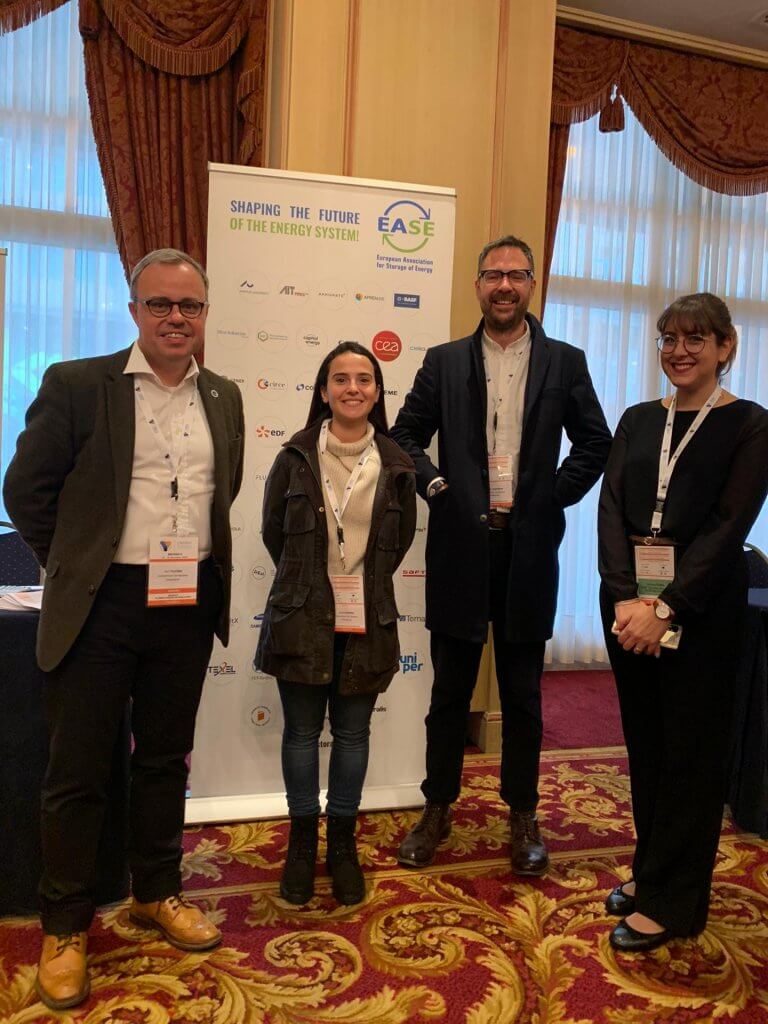
CBI's 2021 Technical Roadmap was presented to illustrate how constant performance improvement and technological advances can create limitless opportunities for the lead battery industry to help achieve global electrification and decarbonization targets.
While navigating through Europe’s funding landscape and showcasing European energy storage case studies using lead batteries (with Exide Group and Systems Sunlight SA), Dr Telford explained the challenges that the industry might face when applying through a “very complex” funding system, but also concluded with an optimistic note on the amount of opportunities that exist for energy storage and batteries in terms of public funding, proving that these are indeed necessary for the future:
“When considering the EU’s high-level goals, the speed of action required to mitigate the climate crisis, it is crucial that all energy storage solutions are not only available for deployment, but also encouraged”.

On October 4, CBI brought together a digital panel to discuss the critical role of batteries for Europe’s sustainable transition. As part of Europe's Sustainable Energy Week, supported by the EU Commission, the virtual event provided an open discussion around the importance of a level playing field amongst technologies in Europe and featured European case studies where advanced lead batteries are providing reliable, recyclable and safe energy storage.
CBI’s Research and Innovation Manager, Dr Carl Telford, opened the event by showcasing our recently launched Technical Roadmap, to illustrate that “sustainable economies need batteries”. If policy makers want to solve the problems of climate change and pollution, while moving from a linear to a circular economy, then industries will “need a proper deployment of battery technologies and energy storage”, and this is where Europe’s lead battery industry plays a key role.
From Exide Europe, Holger Fricke, Director Basic Research R&D EMEA, presented the benefits of Exide’s “on-site solar installation in Portugal”, that combines lead battery energy storage with renewable energy. Carbon emissions were reduced by more than 20% and energy management was improved, turning this case study into a real-world example of decarbonisation, with the installation facilities now being used as a showcase.
Peter Stevenson, Senior Technical Co-ordinator at GS Yuasa, joined the event to discuss the importance of hybrid solutions for Europe’s sustainable energy future. Using an example of the “world’s first container of dual chemistry energy storage system”, he highlighted the “complementarity and flexibility” between lead and lithium battery technologies.
While moderating the panel, Patrick Clerens, Secretary-General at EASE, reflected on the need of a level playing field between different technologies and stated that “no one can pick a technology winner”. Europe needs more batteries and new battery technologies, including hybrid ones, and through this it is possible to have “the best of both worlds”.

There are already some EU industrial and research initiatives going on to demonstrate how batteries can work together to reach the energy demands, such as the European Battery Alliance, Batteries Europe, Batteries 2030+ or IPCEI's. However, it remains important to share the message that a wide array of energy storage and battery technologies are needed to address the flexibility requirements and support the energy transition and the EU green goals, including lead batteries.
By the end of the discussion, it was clear that other industries can learn from the lead battery experience since it’s a well-established industry that represents a major example of circularity in Europe. Through research and innovation, enhancing the performance of lead-based technologies will be essential for Europe’s sustainable energy future and create further opportunities for synergies with other chemistries.
Watch the video of the event:
Download the presentations from the event below:
For the first time at the Batteries Event, held in September 2021 and organized by Avicenne Energy, there was a dedicated session for lead batteries. This is another major step for the industry demonstrating how this technology continues to evolve and is key to the current discussions within the energy sector.
Co-organized by CBI and EUROBAT, the session ‘Driving sustainable growth through LEAD BATTERY innovation’ brought up significant topics such as decarbonisation, circular economy and the work of the lead industry to upgrade and innovate for current applications such as clean energy and e-mobility.
Opening the session was EUROBAT’s Director Communications & Stewardship, Gert Meylemans, who noted that both lead and lithium will still be the dominant chemistries in the next decade.
Focusing on the numbers, lead-based technology will remain almost exclusively the preferred technology for 12V automotive applications, while continuing to be the dominant technology for UPS applications (Uninterruptible Power Supply) providing 90% of global demand and increasing by 5.5 GWh by 2030.
Our very own Research and Innovation Manager Dr Carl Telford introduced our recently launched Technical Roadmap to the audience and explored the funding opportunities for the industry within the EU.
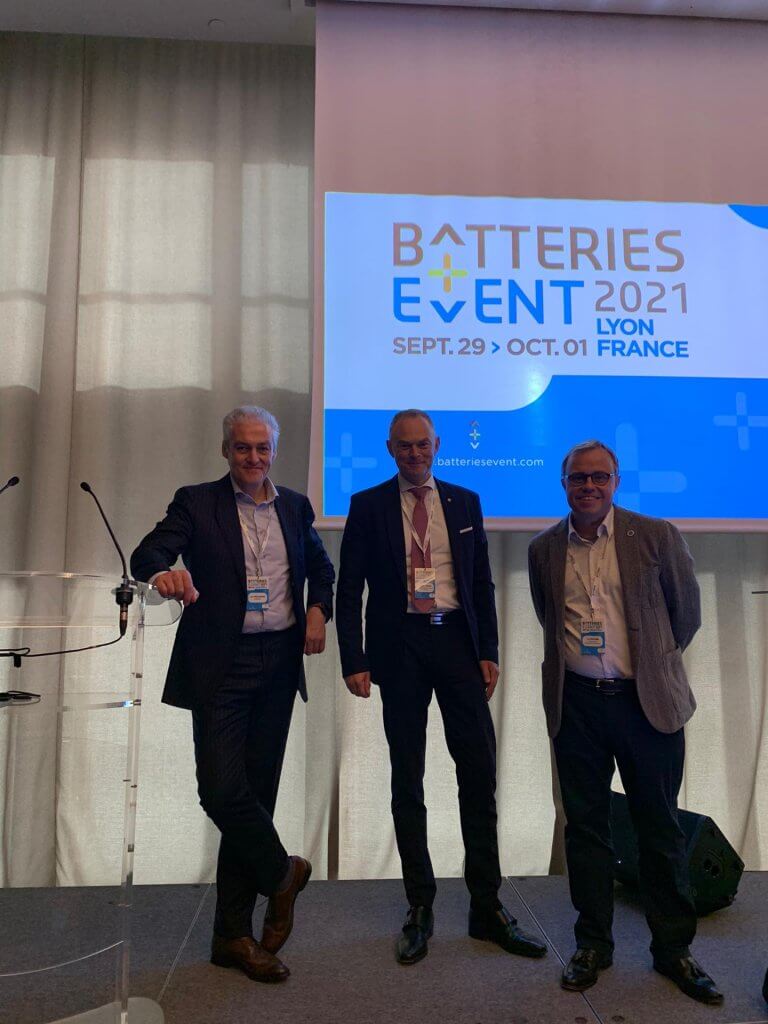
CBI’s new Technical Roadmap is an expansive document setting out key research priorities for the industry for all applications using lead batteries. With a special section dedicated to energy storage systems solutions where lead batteries play a major role – from utility and renewable energy storage projects to hybrid solutions – the opportunities to enhance lead batteries through research and innovation have huge potential.
Dr Christian Rosenkranz from Clarios (also CBI’s Chairman) explored both CBI and EUROBAT Roadmaps, highlighting the “strong innovation potential of all battery technologies” and their contribution to the EU Green Deal, Fit-for-55 and net-zero pollution goals, as they:
To conclude this fantastic session, Dr Bernhard Riegel from HOPPECKE explored the innovation potential of electrochemical storage systems for industrial applications, an “ongoing process” for established technologies. High recyclability, low investment cost and low safety requirements were pointed out as the main advantages of the lead-based technology for the upcoming years.
The Batteries Event 2021 has ended but our work is now more exciting than ever with all the future opportunities for the technology and the innovation to come, driven by CBI’s Technical Roadmap.
On September 15, the EU Commission’s President made a State of the Union speech highly focused on the future: from investing in 5G, to improving research and innovation and making sure that Europe will reach the EU Green Deal goals. Ursula Von der Leyen pointed out some of the key aspects that rule our work at CBI and our dialogue with our members and companies from the industry.
Through NextGenerationEU, the Commission is committed to “invest in 5G and digital skills” as the demand for faster and more efficient networks increases, along with the explosion of AI, EVs and many other real-time autonomous applications.
“To ensure uninterrupted access to these services, telecoms and data centre back-up demand will increase exponentially” and this is where lead batteries have an important role. As the main option for the “uninterruptible power supply (UPS) energy storage needed for data centres and network rooms” representing 90% of global demand, lead batteries are a critical player for Europe’s digital transition.
But let’s not forget about the role of this technology for hospital back-up applications, incredibly relevant during the COVID-19 pandemic, by “ensuring uninterrupted power supplies”. In Italy and in the UK, FIAMM’s provided safe and reliable lead batteries to support hospital power.
Another wish from Von der Leyen is to achieve “European tech sovereignty”, which also includes the ability to supply the entire value chain in many highly demanded technologies, such as EVs, hybrid vehicles or renewable energy storage systems. CBI recognizes that all batteries are needed to give Europe the faculty to attain green goals and, as we invest in research and innovation for advanced lead batteries and work with world-class institutes, we are here to say that this technology is a critical player in the green transition by offering “high-performance, reliability, safety and a sustainability profile including almost 100% recycling at end-of-life in Europe”.
We are demonstrating that lead batteries can make EVs safer, that our members are involved in clean energy storage projects contributing to decarbonization and that this technology is a great team player when collaborating with other batteries and using the best of both chemistries for a more efficient outcome.
As the urge for a fair green transition and a cleaner energy society increases, CBI believes that the actions to reach 2030 goals must be taken now and that the potential and opportunities for advanced lead batteries are limitless:
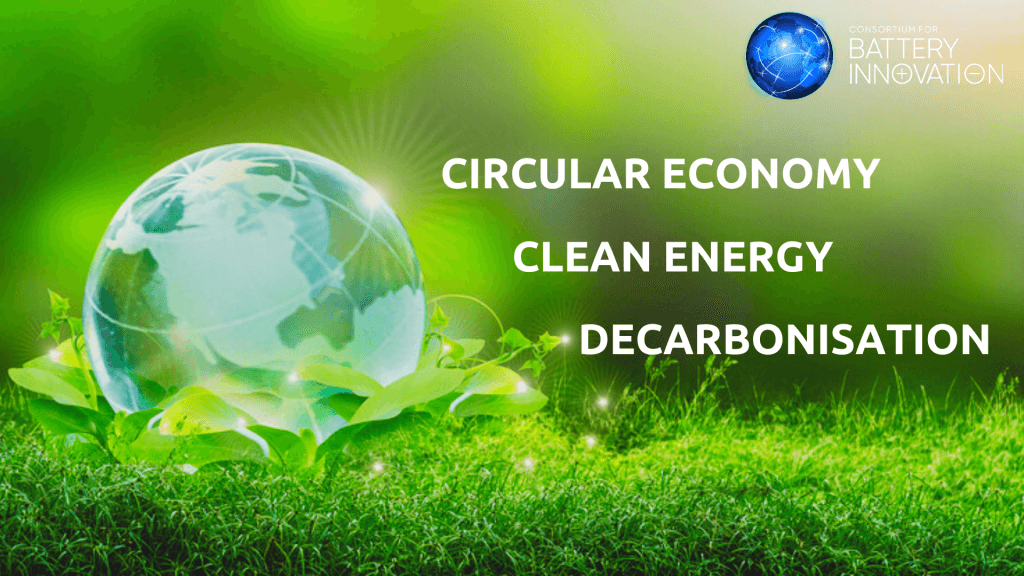
This year is set to be the Year of Rail in Europe and the EU is also currently celebrating its Mobility Week.
In fact, there are many reasons to keep investing and improving this sustainable, innovative and fast transport mode. Not only does it add value from an economic perspective by contributing to the EU Green goals for 2050 while creating jobs and growth (note that: only in 2015, the rail sector employed directly 577,000 people according to an EU Commission's report ), but it also has a social impact by connecting people from all member states through seamless rail networks and reducing distance when it comes to commuting.
Therefore, thinking about the future of Europe’s Rail industry also leads to the future of its sustainability in our society - possible to develop through research and innovation.
In a recent article by Dr. Bernhard Riegel, Director of Research Development at battery systems provider for train operating companies, HOPPECKE Batterien GmbH & Co. KG, he notes that lead batteries are still the most widely used technology in Central Europe for supplying power to the onboard electrical systems of trains.

In the article featured on Charge the Future, Dr. Riegel discusses the unique blend of benefits offering by lead batteries for rail applications. At moderate temperatures they combine low maintenance requirements, reliability and low lifecycle costs. In many European trains, lead batteries are used to protect onboard power supply systems. Whether they provide emergency power supply for passenger cars, start the diesel engine for diesel locomotives or are used for direct drive, lead batteries play an essential role for rail.
CBI’s « rail road » to keep supporting research and innovation for lead batteries in order to significantly contribute to the EU green goals and future climate objectives of our planet, is linked to the knowledge that lead batteries have a tremendous potential to innovate and be used in many different applications in a highly sustainable, economic and safer way.
Dr. Riegel, also highlighted the growth potential of lead batteries in this and other sectors, from providing uninterrupted power to hospitals and back-up to telecoms and stabilise grids, to backing up renewable energy supplies and supporting hybrid and electric vehicles.
As we celebrate the EU’s mobility week, we recognize the many ways lead batteries are powering low-emission mobility and contribute to Europe’s low carbon future.